Baja California Sur & North East Mexico
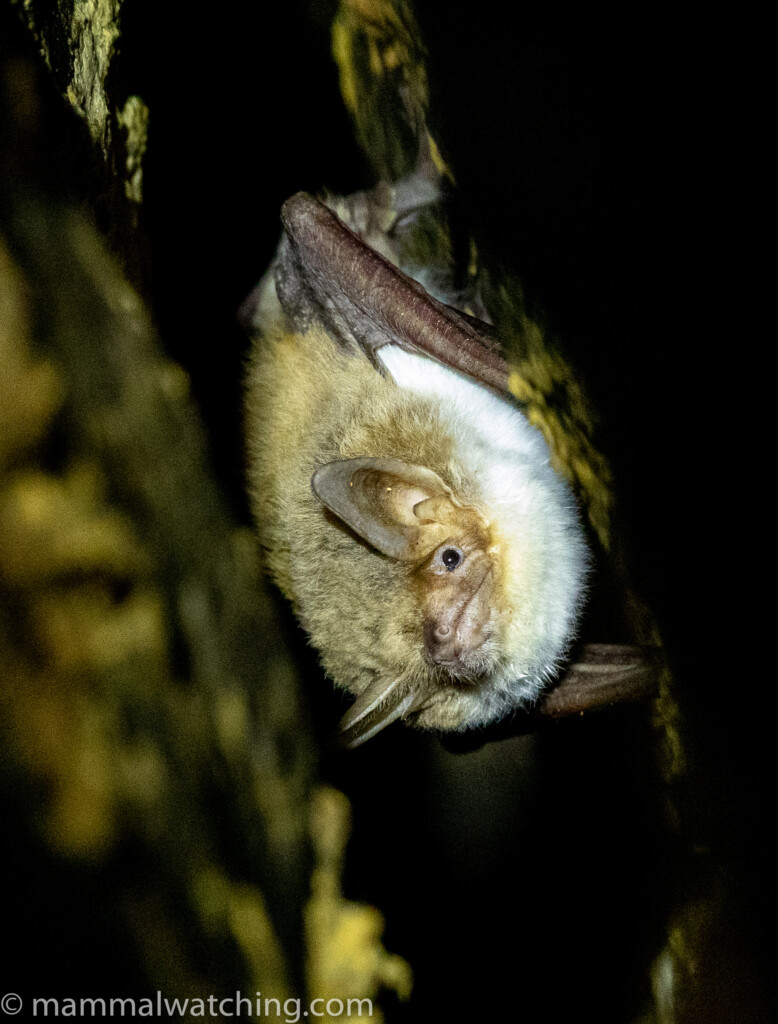
Fish-eating Bat, Myotis vivesi
In April 2022 I returned to Mexico for what seems to have become an annual Mexican species-fest with the talented Juan Cruzado as my guide. We spent a week divided between Baja California Sur (BCS) and the northeast around Monterrey.
Juan knows Mexico and its mammals as well as anyone, but on this trip we were visiting an area new to both of us: the state of Baja California Sur was one of only two states Juan had not visited (Baja California Norte is the other). And so for the first half of this trip we were winging it more than usual. This was made compounded by our need to change plans at last minute according to the forecasted sea conditions.
I would fly to Mexico City, meet Juan, and fly on to La Paz in BCS. We’d spend 5 nights in Baja – our route in part to be decided by the sea conditions – before flying to Monterrey for 3 nights in the states of Coahuila and Nuevo Leon.
Baja California Sur
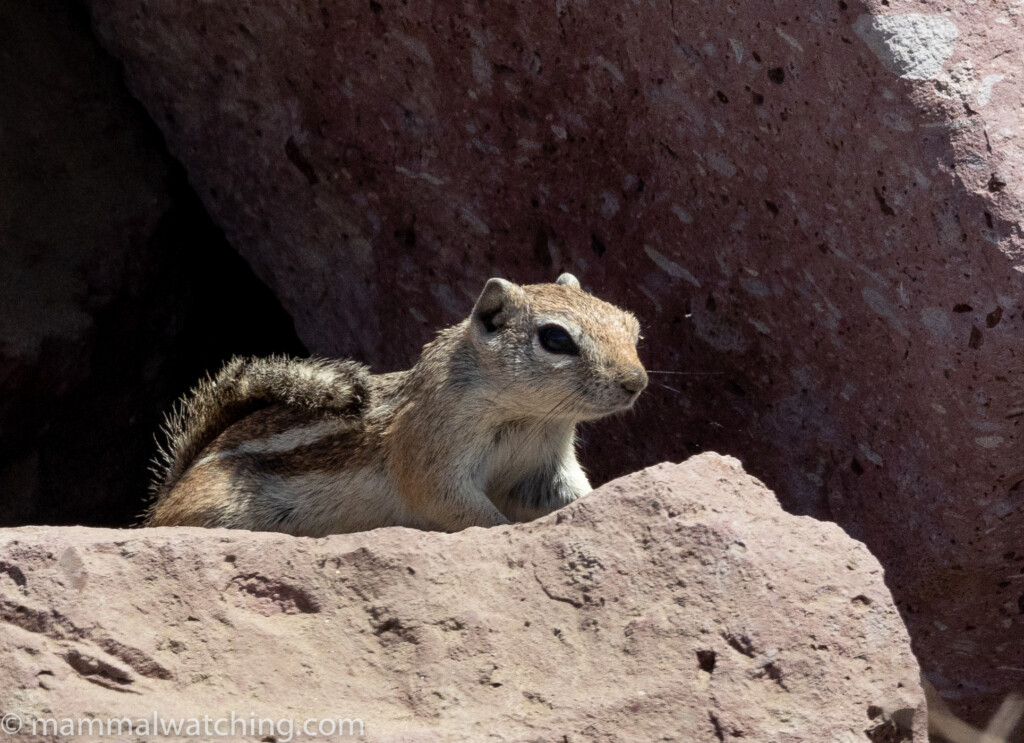
White-tailed Antelope Squirrel, Ammospermophilus leucurus. La Paz
We had a loose plan when we got to Baja, based on a target list of mainly endemic species. There are only a few endemics in Baja, and several are confined only to individual islands. Our main terrestrial targets were Black Jackrabbit and Fish-eating Myotis, together with the – let’s be honest more boring – Peninsular Cave Myotis, Eva’s Desert (Deer) Mouse and three pocket mice. With the right weather I also wanted to look for Dwarf and Pygmy Sperm Whales off of La Paz as well as Guadalupe Fur Seals in the far northwest of the state.
I was told, but only after we arrived, that it is hard to combine land and sea mammals on a single trip to Baja. During the winter months the land is pleasantly cool but winds mean the sea can get surprisingly rough. The sea is much flatter in the summer, but then it is extremely hot on shore.
April is a reasonable month. It was cool enough to be pleasant, but the sea was usually too rough for some of our plans.
La Paz
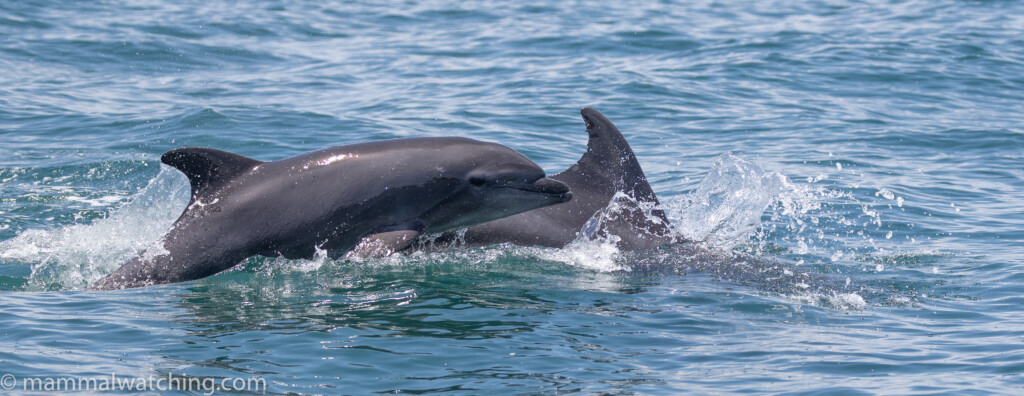
Common Bottlenose Dolphin, Tursiops truncatus
La Paz is the largest town in BCS, but still small and not too touristy. The only mammal in town we looked for were White-tailed Antelope Squirrels, and Juan tracked down several – via iNaturalist – on waste ground here.
Claudia Diaz, from Wild About Colombia, was working in La Paz when we were there, and is an expert on the local cetaceans.
I’d asked Claudia about the chances of seeing several cetaceans including Rough-toothed Dolphins, Beaked Whales and kogias. She reckoned we had next to no chance of the first two species but could have a slim possibility of either kogia if we could sail on a day when the ocean was like glass. And so she very kindly offered to arrange for a boat to take is out for a day to look for Dwarf and Pygmy Sperm Whales (aka kogia species).
But the weather was against us and we decided to cancel. A day at sea with Claudia would have been a lot of fun, kogias or not. But there is no time for fun on a mammal trip! Of course, the day after we left Baja a Pygmy Sperm Whale stranded in a metre of crystal clear water right off of La Paz. Sigh. So they are there!
La Paz: Isla Espiritu Santo
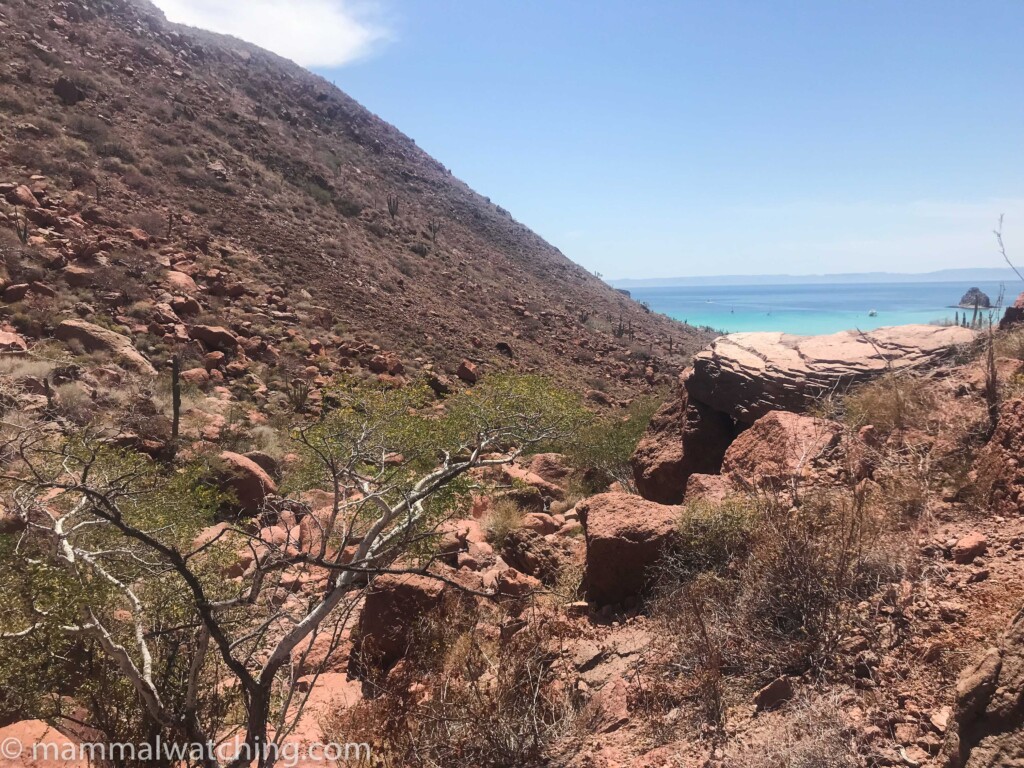
Black Jackrabbit habitat
Baja’s largest endemic mammal is the Black Jackrabbit (Lepus (californicus) insularis). It is found only on Isla Espiritu Santo, just off La Paz. Judging by pictures on iNaturalist, the rabbit is not uncommon on the island. Then again, we didn’t know anyone who had seen it. In 2022 its taxonomy was in doubt and later that year it was relegated to be a subspecies of Black-tailed Jackratbbit.

Isla Espiritu Santo
Getting to the island privately would have been expensive, so Juan booked us onto one of the many group day trips from La Paz that tour operators offer. The day was not the highlight of the trip. The sea, and the coastline, is beautiful but a good portion of the boat trip was spent picking people up, and doing very little at various beaches and rocks, along the way to the island. In the end Juan and I had only 2 hours on the island, in the mid-afternoon. The boatman dropped us on two beaches and left us to wander around the interior while the others in the group went swimming.
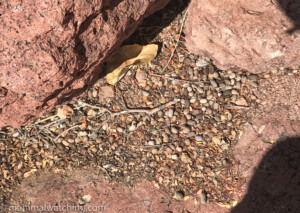
Black Jackrabbit poo
We saw plenty of evidence of rabbits but, unsurprisingly given the heat of the day, no animals.
I should have checked with Claudia. She had never seen a rabbit but did make some calls for us after we returned empty handed. Several local operators offer overnight camping/glamping trips to the island. These, she was told, are the way to see the rabbits as well as the island’s numerous Ringtails which are a campground pest. There is also an endemic subspecies of White-tailed Antelope Squirrel here, which is presumably easier to spot at dawn and dusk. Claudia tried to get us out there for a night, but during the busy season we had to take a two-night trip. I might return one day, epecially if the rabbits return to full species status.
The only mammals that day were several pods of playful Bottlenose Dolphins.
Sierra La Laguna Biosphere Reserve
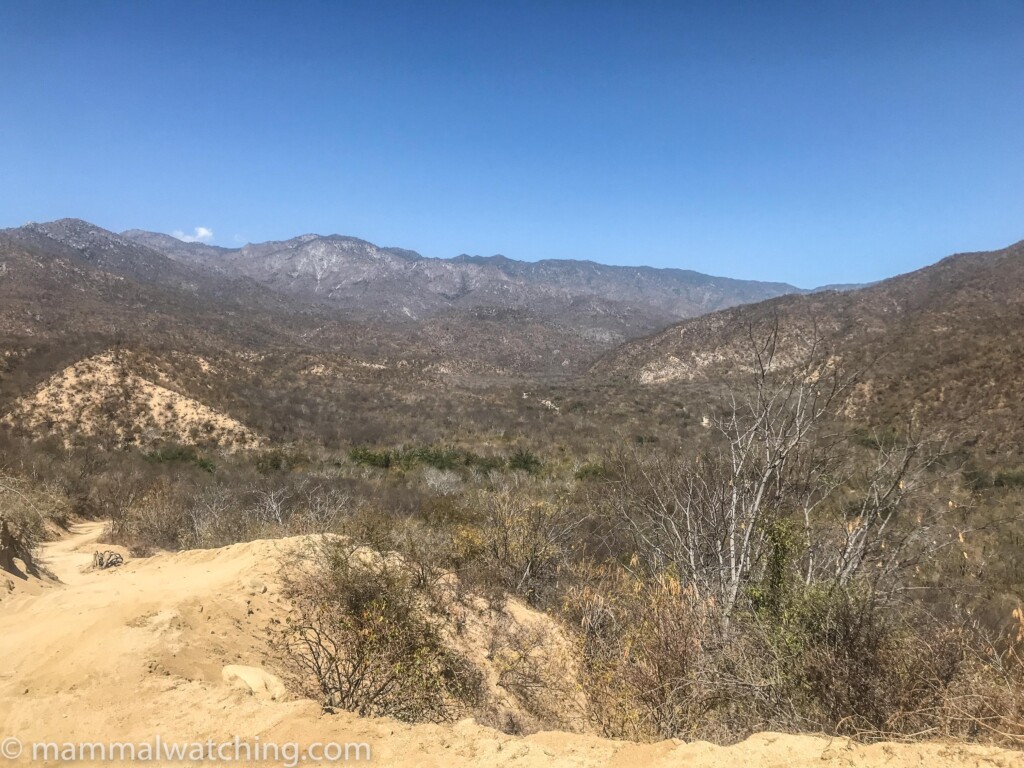
The Sierra La Laguna Reserve is an important protected area, two hours’ drive from La Paz. You need high clearance for the last 30 minutes of the drive. We spent a night in some small self-catering cabins – Rancho La Rueda +52 612 228 1485 – and set traps here.
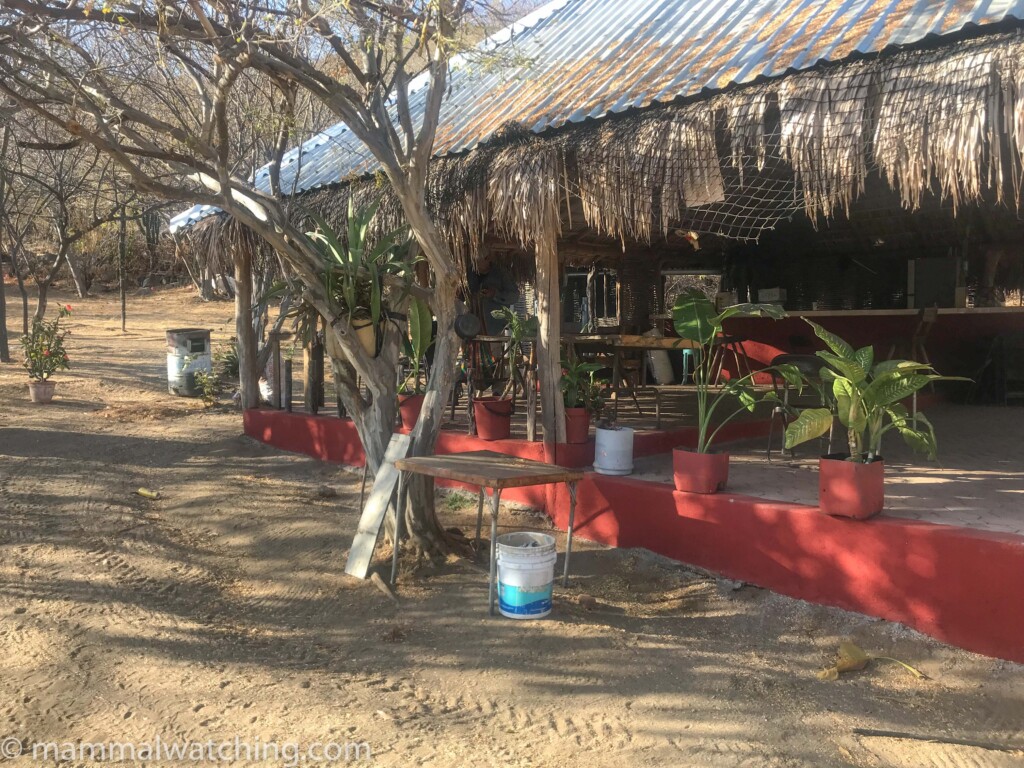
The place was deserted. The manager of the cabins gave Juan directions on where to find the last remaining pools of water along the river and we walked there at dusk to catch bats. We couldn’t find any water and we didn’t catch any bats. And we only recorded one or two flying close by.
The only bats we saw that night were back in our cabin at midnight. Juan tried repeatedly to catch them but they were too smart for us. One landed on a rafter long enough to pose for a picture: a Mexican Funnel-eared Bat.
The Sherman trapping overnight was more productive. We caught several of the two endemic target species here.
Eva’s Desert Mouse was the first.
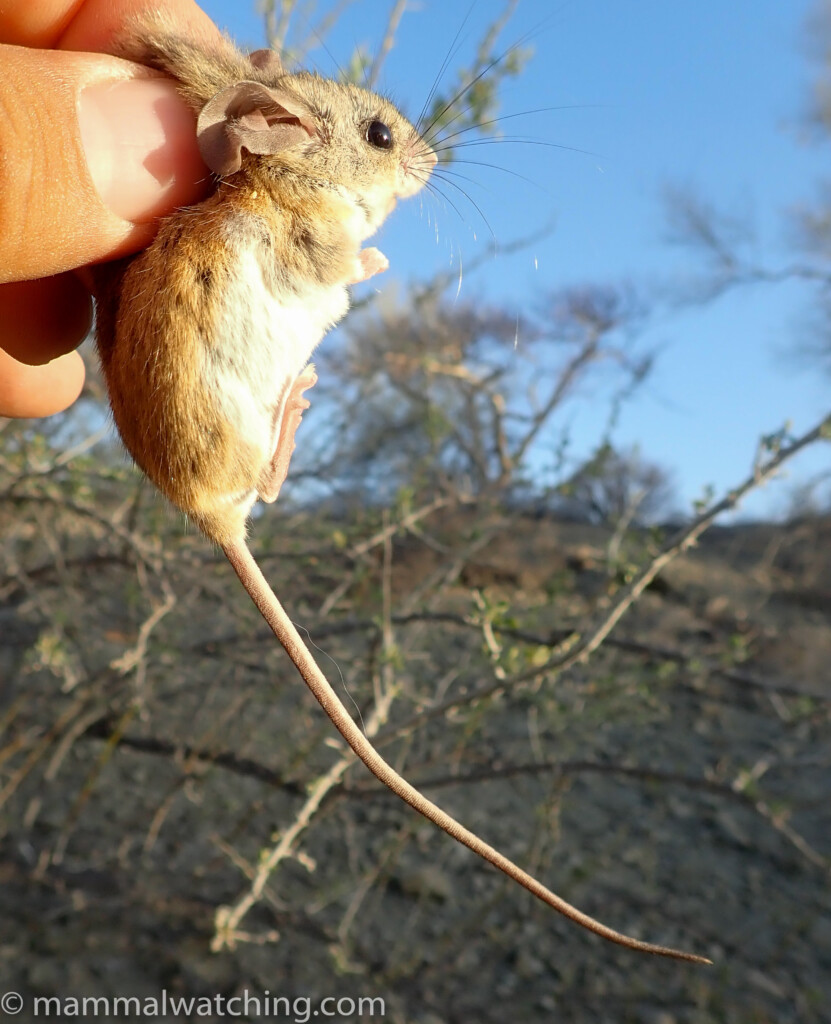
Eva’s Desert Mouse, Peromyscus eva
Dalquest’s Pocket Mouse the second.
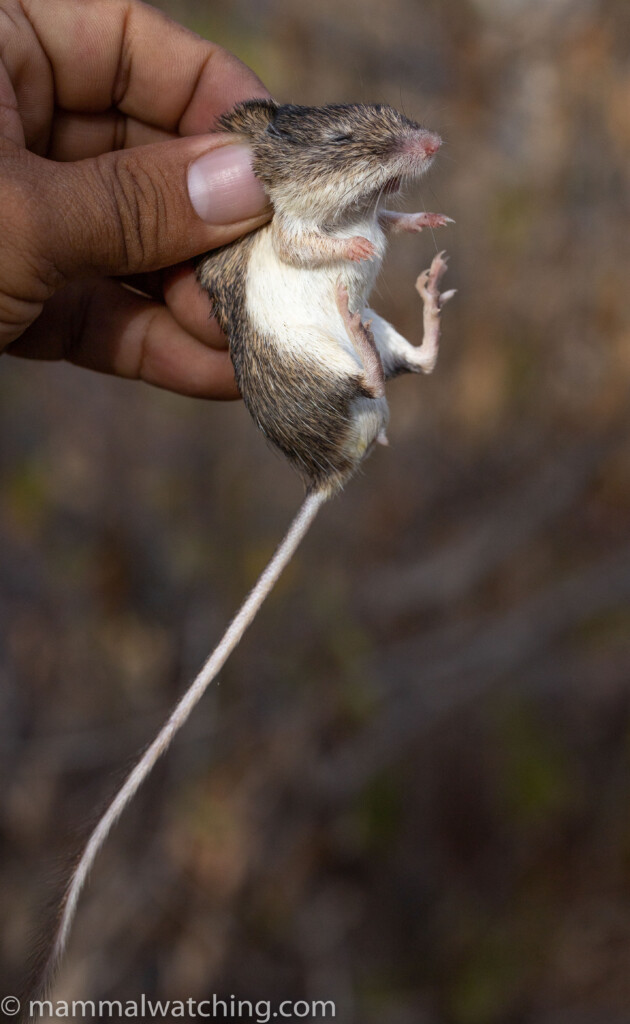
Dalquest’s Pocket Mouse, Chaetodipus ammophilus
We also caught a couple of Spiny Pocket Mice.
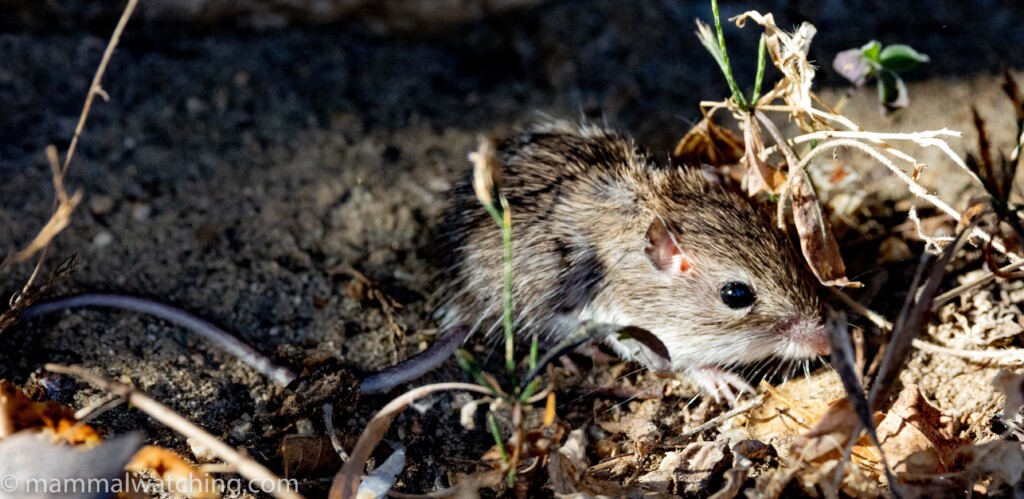
Spiny Pocket Mouse, Chaetodipus spinatus
San Juan de Los Planes
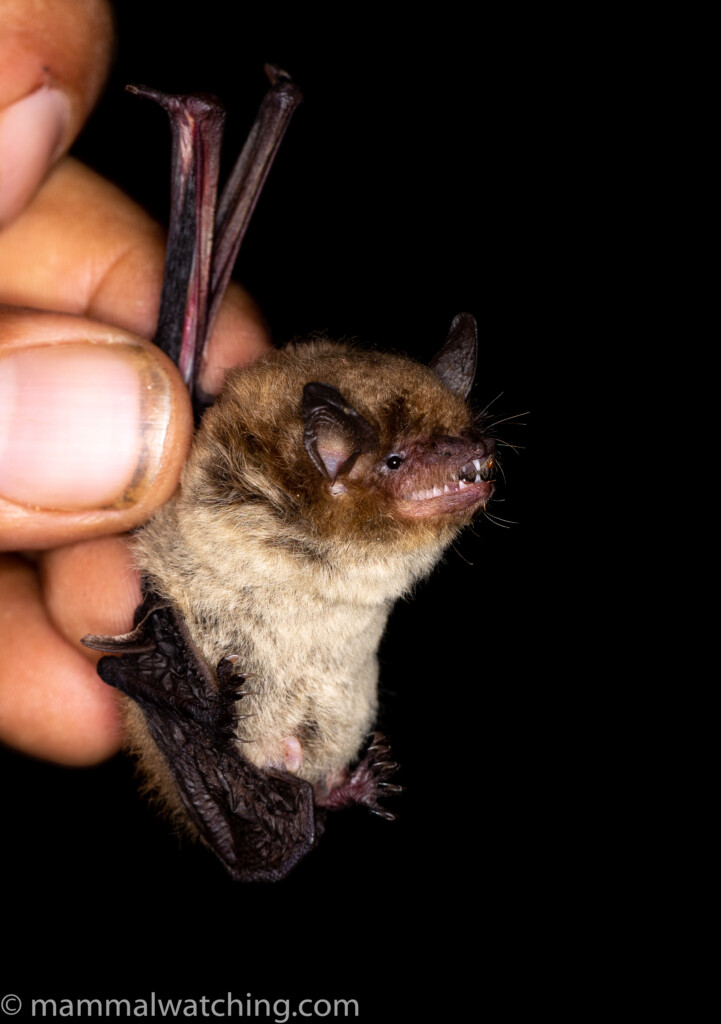
Peninsular Cave Myotis, Myotis velifer peninsularis
One of Juan’s friends had caught Peninsular Myotis, a BCS endemic that had been split from Cave Myotis (M. velifer) though in 2023 was lumped back in with it, on a farm close to San Juan de Los Planes. which is just south of La Paz. We spent a night in a hotel in the small beach community there and set up a net over a tank on the farm at dusk.
We caught several Peninsular Myotis, as well as a Canyon Bat (aka Western Pipistrelle).
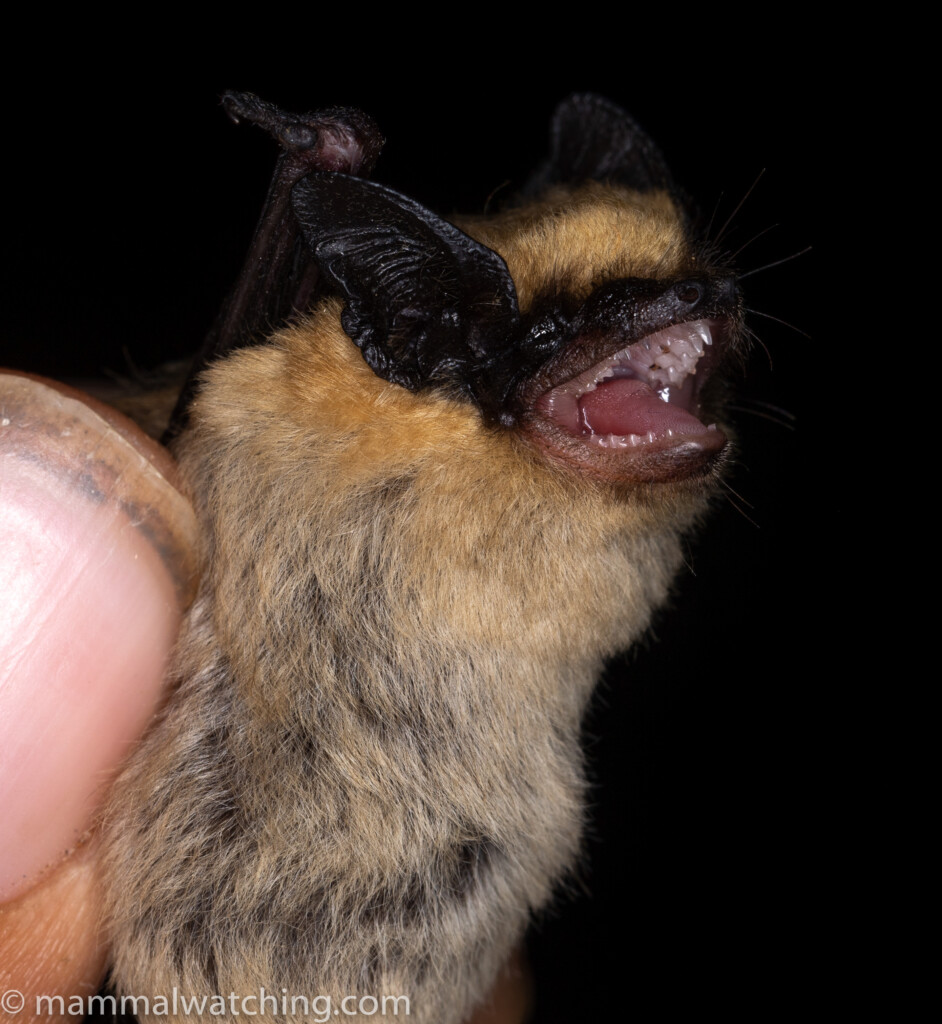
Western Pipistrelle, Parastrellus hesperus
and a California Myotis.
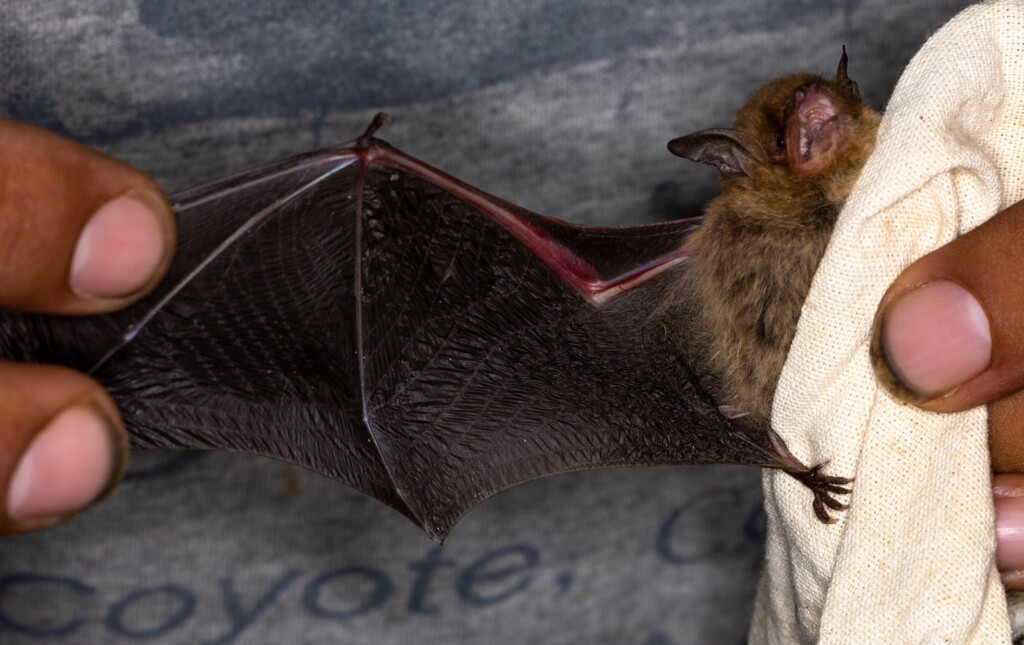
California Myotis, Myotis californicus
Traps in the desert near the hotel caught our target species – the Cerralvo Pocket Mouse (Chaetodipus siccus) – as well as more Eva’s Desert Mice (Peromyscus eva).
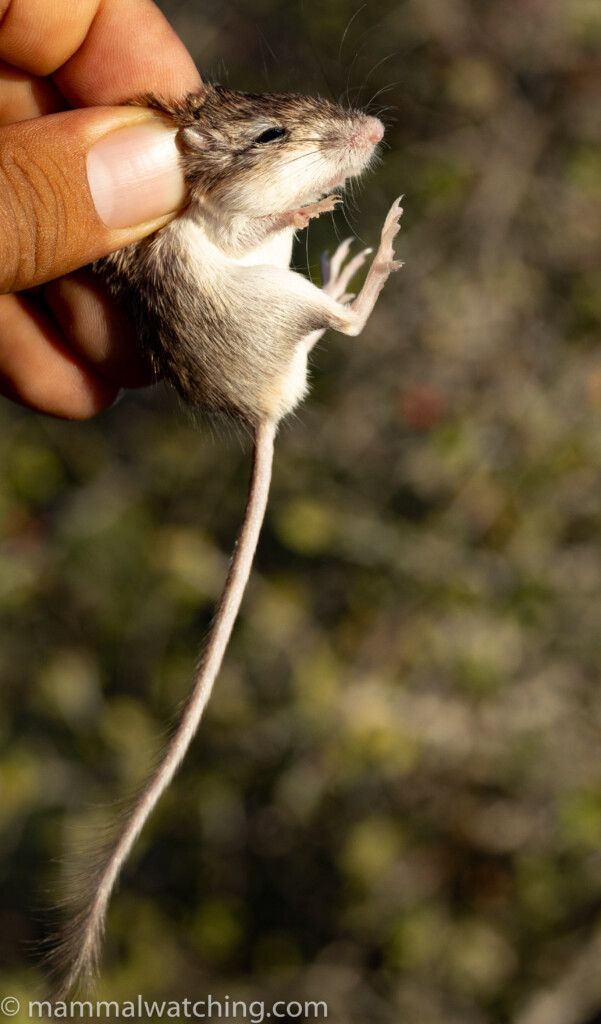
Cerralvo Pocket Mouse, Chaetodipus siccus
Loreto
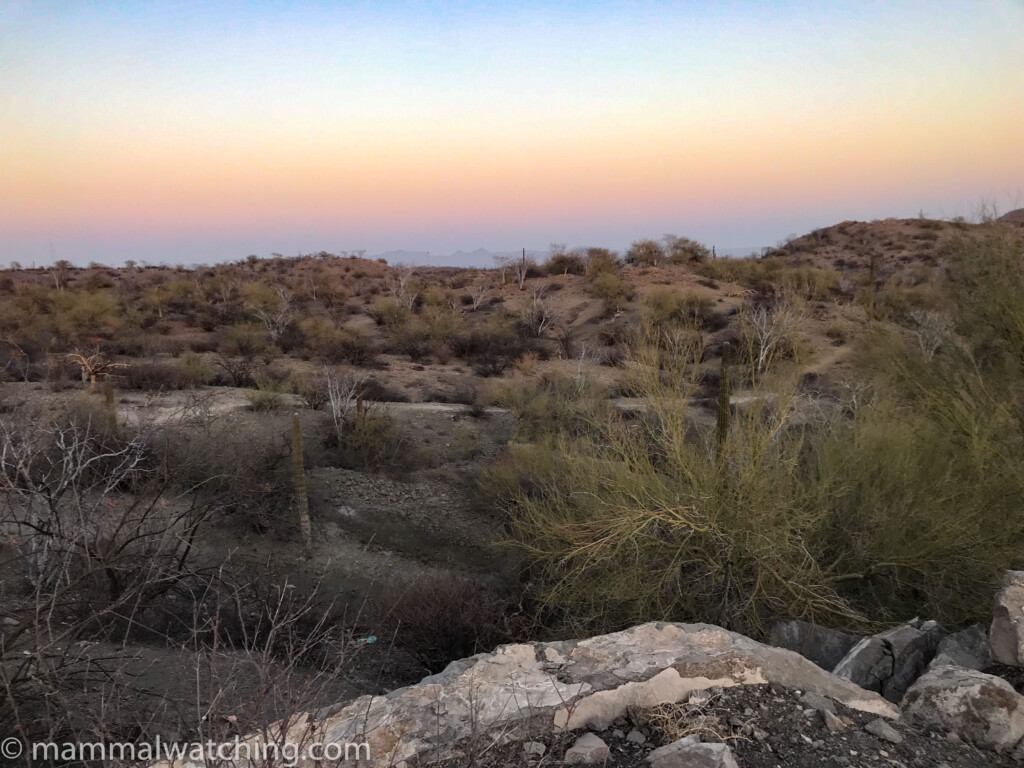
We spent a night in Loreto, 4 hours’ drive north of La Paz.
Traps set around here caught our target Little Desert Pocket Mouse, as well as more Eva’s Desert Mice.
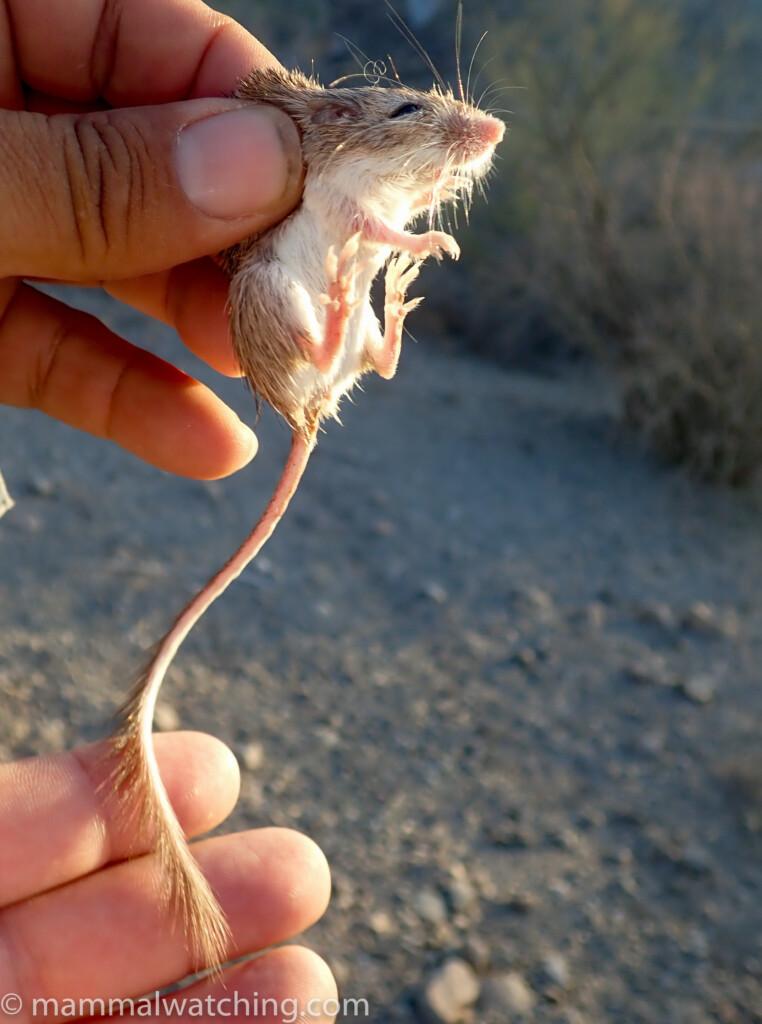
Little Desert Pocket Mouse, Chaetodipus arenarius
At the nearby Misión San Francisco Javier de Viggé-Biaundó we looked for the local subspecies of Rock Squirrel, that some believe is a different species in Baja.
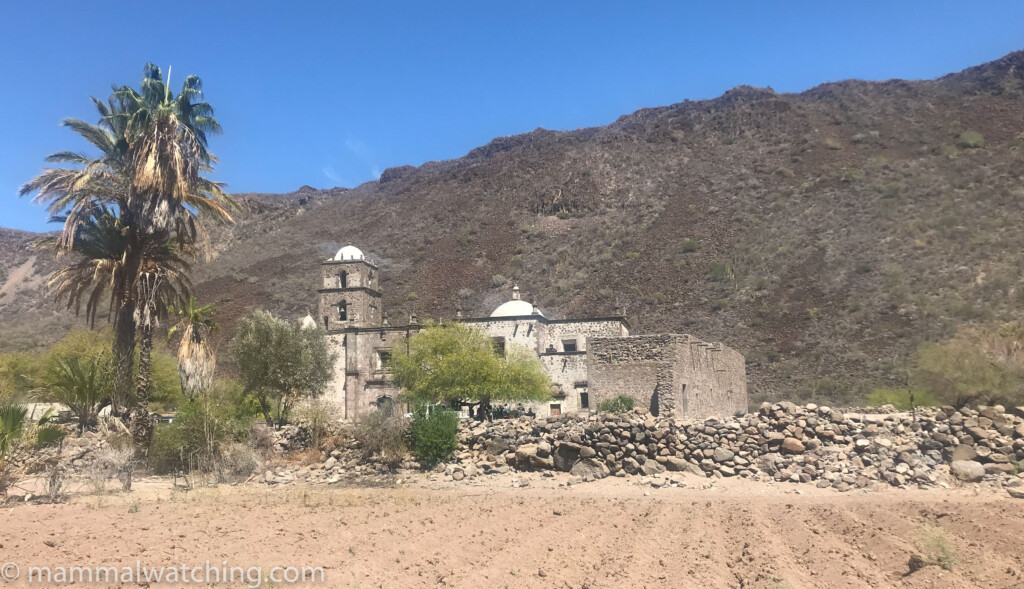
From the mision entrance, you should walk through the gardens and head down to the right to a small crop field next door. A local farmer explained the field was full of squirrels, and that the squirrels were full of his corn. It took 15 minutes to spot a couple of them emerging from the stone wall in the picture above.
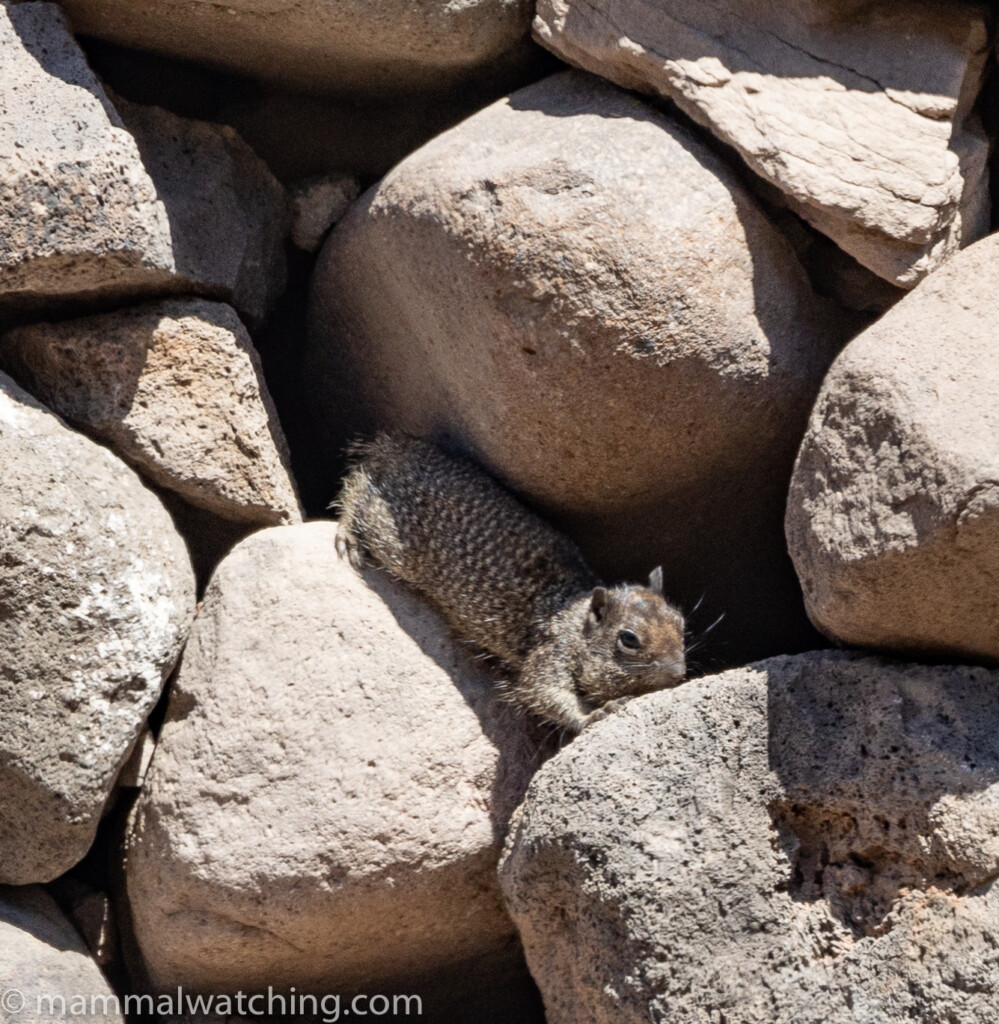
Baja Rock Squirrel, Otospermophilus variegatus atricapillus
Loreto: Isla Coronado
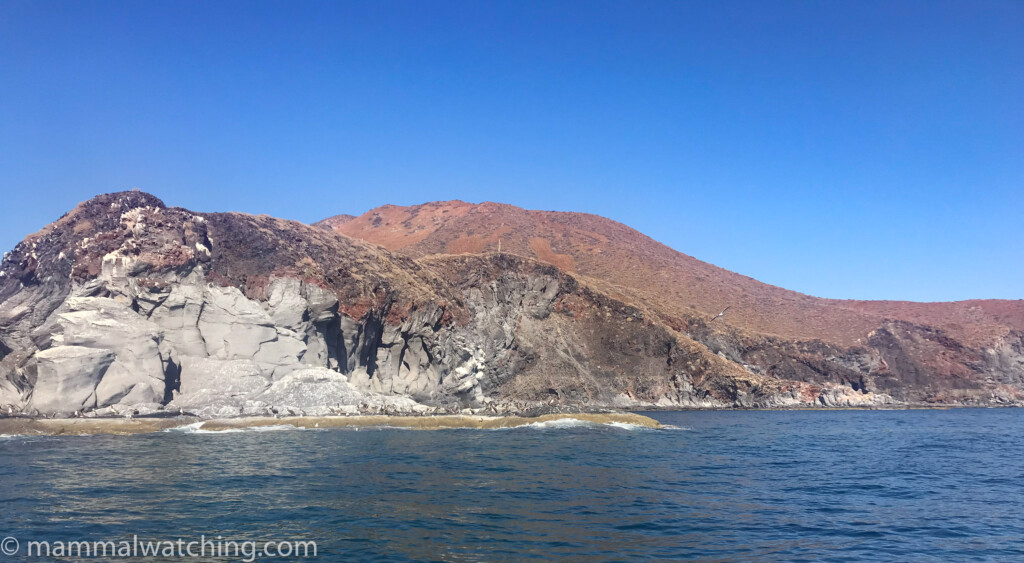
Our main reason to visit Loreto though, was to travel to Isla Coronado, just offshore, to look for Fish-eating Myotis, one of Baja’s most interesting mammals. Restricted to the Gulf of California, this is the largest myotis in the Americas and about as big as Europe’s Greater Mouse-eared Bat. It has exceptionally large feet which it uses to catch small fish and crustacea. Fish-eating Myotis roost in sea caves, mainly on islands. And one of Juan’s friends said it should be easy to find in caves on Isla Coronado. We arranged a trip with “Panini” Talamantes (+52 613 124 1974). It was $250 for a half day private boat ride to the island. I guess it could have lasted all day if we had wanted but it was forecast to be too rough in the afternoon to be out there.
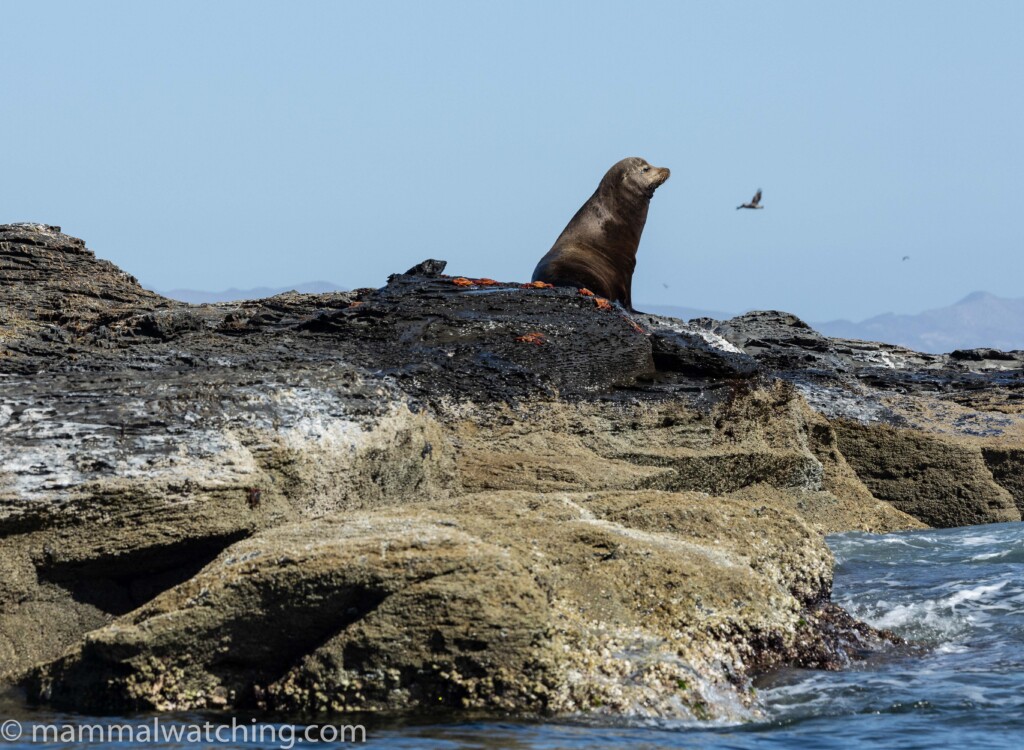
Californian Sea Lion (Zalophus californianus)
Getting to the island though requires calm seas. There was, we discovered, no place to tie up the boat near the caves: getting ashore required the boat to hover close to the rocks so that we could jump ashore. California Sealions nearby were a lifer for Juan.

Fish-eating Myotis caves
The weather was rough over the weekend, but the boatman reckoned we could try on Monday morning. Despite the swell, Juan and I managed to leap ashore with dry feet and dry cameras and the boat undamaged.
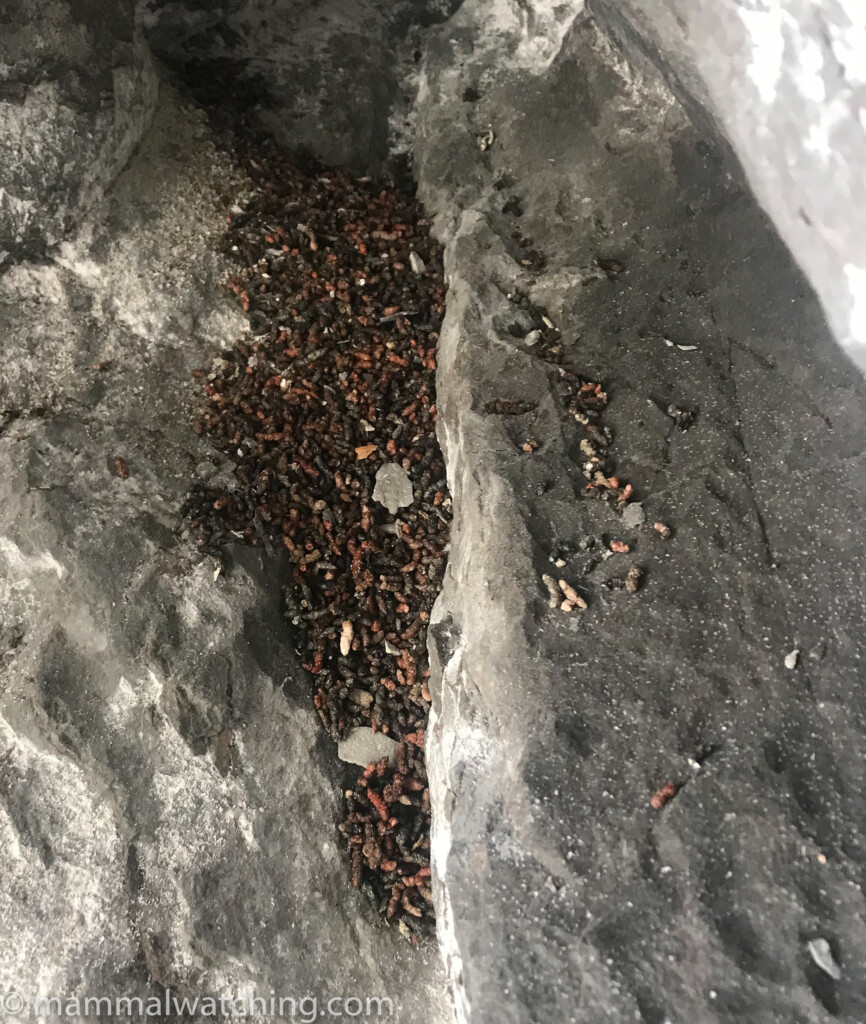
Myotis vivesi guano.Wikipedia reckons the red guano comes from eating crustacea; the black guano from fish.
Though there was plenty of evidence of Fish-eating Bat guano in the larger cave we could not find any bats. Juan and I managed to clamber and squeeze along a very narrow passageway to eventually find a lone bat in the thermal scope. Success! Several photographs later we realised it was a Lesser Long-nosed Bat with a baby. Failure! This is a pretty good bat and one I had never seen roosting before, but it was not the main target.
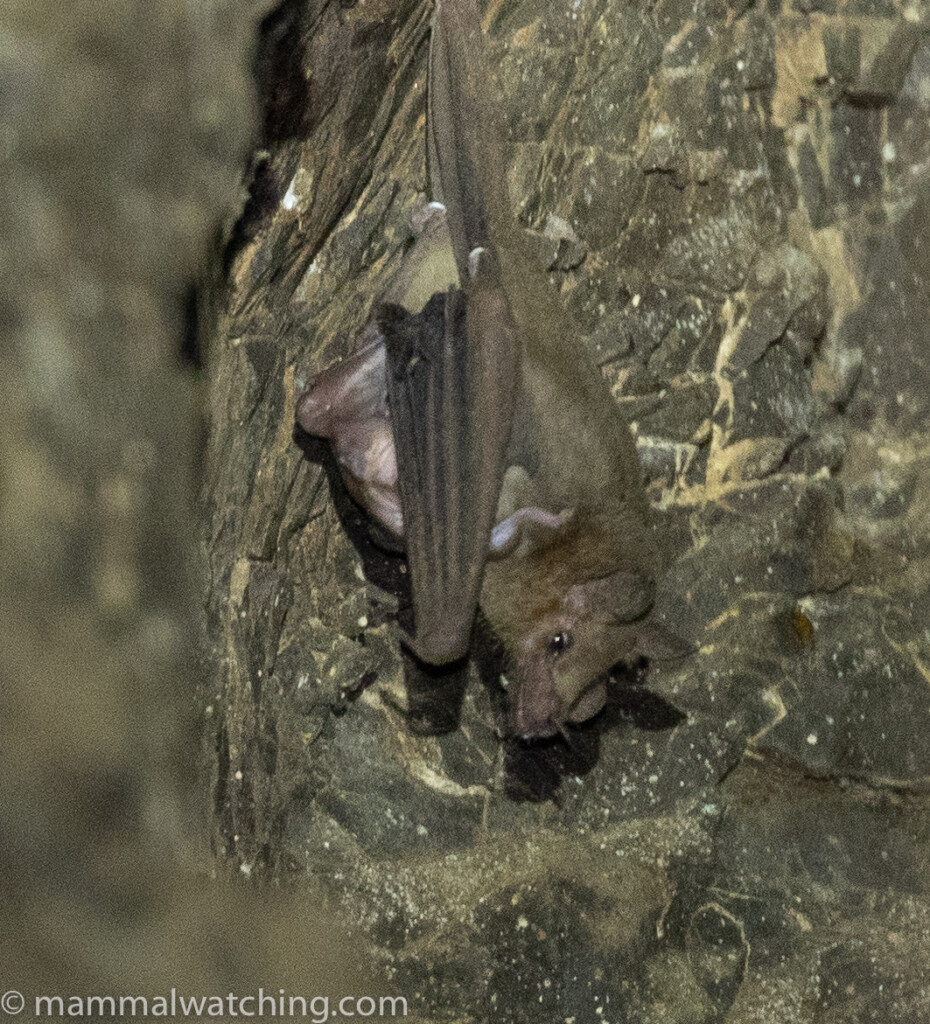
Lesser Long-nosed Bat, Leptonycteris yerbabuenae
Despondent, I began to make plans to return in the late afternoon in the hope some myotis might have moved closer to the entrance of the cave. And then Juan noticed a bat in a nearby fissure. Success! And far easier to view than the Lesser Long-nosed Bat.
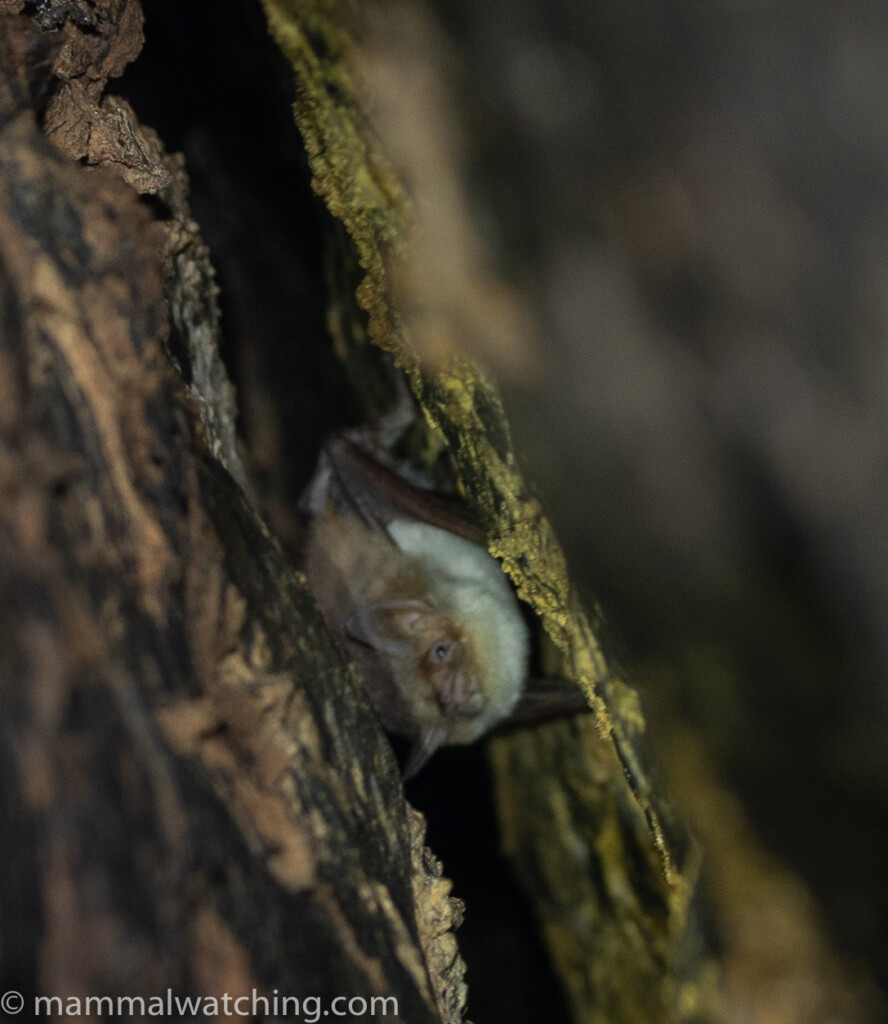
Fish-eating Bat, Myotis vivesi
There is an endemic deer mouse on the island, the Coronado’s Mouse, which the boatman said he has occasionally seen late in the day near the caves. We didn’t see one.
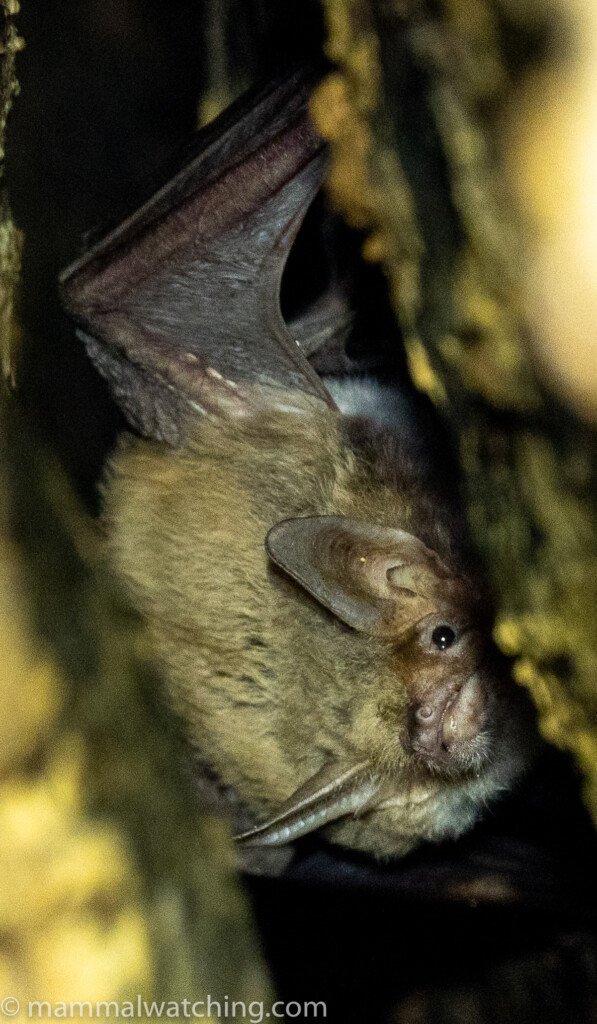
Fish-eating Bat, Myotis vivesi
Islas San Benito
I had hoped we would drive to the far north of the state to take a boat out to the Islas San Benito, off Cedros Island. In recent years Guadalupe Fur Seals have formed a rookery on one of the islands and it seemed possible to arrange to take a boat out to look for them from the fishing village of Bahia Tortugas on the mainland. Alternatively you can charter a small plane to Cedros Island, and take a boat from there. We planned to visit despite it being 12 hours’ drive from La Paz just to get to the jumping off point.
But the weather was against us again. The seas were forecast to be too rough for a boat trip until the day before we were due to leave Baja, and the plane was fully booked. So we returned to La Paz and flew to Monterrey a day earlier than planned, after I had snorkeled with a Whale Shark.
The islands are 30 miles off the mainland (and around 15 miles west of Cedros Island), so you’d need a solid boat and calm seas. We had arranged our tentative visit through the Motel Nancy in Bahia Tortugas. Juan dealt with Ernesto Camacho +52 615 159 8913 there to book a boat.
If, like me, you want to see Guadalupe Fur Seals you can also visit San Miguel Island in the Channel Island off Los Angeles. Though this is not a simple trip either: it requires two nights camping and a 15-mile hike to see the seals.
Baja List
HETEROMYIDAE
Dalquest’s Pocket Mouse (Chaetodipus ammophilus)
Little Desert Pocket Mouse (C.arenarius)
Cerralvo Pocket Mouse (C.siccus)
Spiny Pocket Mouse (C.spinatus)
SCIURIDAE
White-tailed Antelope Squirrel (Ammospermophilus leucurus)
Rock Squirrel (Otospermophilus variegatus)
CRICETIDAE
Eva’s Desert Mouse (Peromyscus eva)
PHYLLOSTOMIDAE
Lesser Long-nosed Bat (Leptonycteris yerbabuenae)
NATALIDAE
Mexican Greater Funnel-eared Bat (Natalus mexicanus)
VESPERTILIONIDAE
Western Pipistrelle (Parastrellus hesperus)
California Myotis (Myotis californicus)
Peninsular Cave Myotis (M. velifer peninsularis)
Fish-eating Bat (M.vivesi)
OTARIIDAE
Californian Sea Lion (Zalophus californianus)
EQUIDAE
Domestic Horse (Equus caballus)
DELPHINIDAE
Common Bottlenose Dolphin (Tursiops truncatus)
16 species with 6 lifers (in bold)
Nuevo Leon and Coahuila
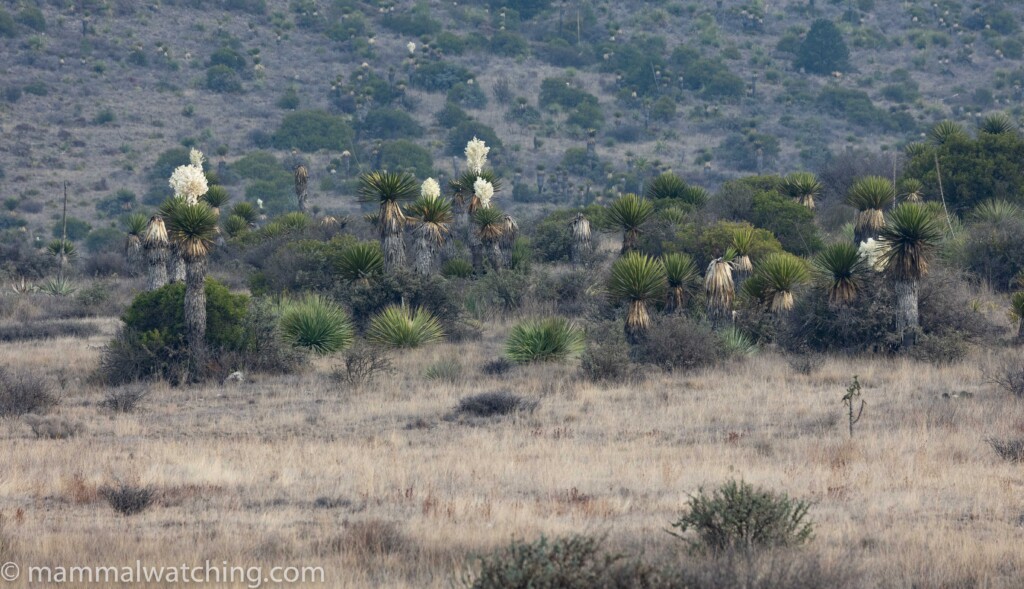
Flat-headed Myotis habitat near Chapultepec
Saltillo Sur
Juan and I left La Paz and flew to Monterrey via Guadalajara. We drove an hour to Saltillo Sur, checked into a hotel, grabbed tacos and drove 45 minutes to a beautiful valley here in the late afternoon.

We were in a reserve managed by the local community, and you’d need to talk to Juan to arrange to visit. A beautiful spot where the habitat, a mixture of cactus and rare pines, screamed “rare small mammal live here”.
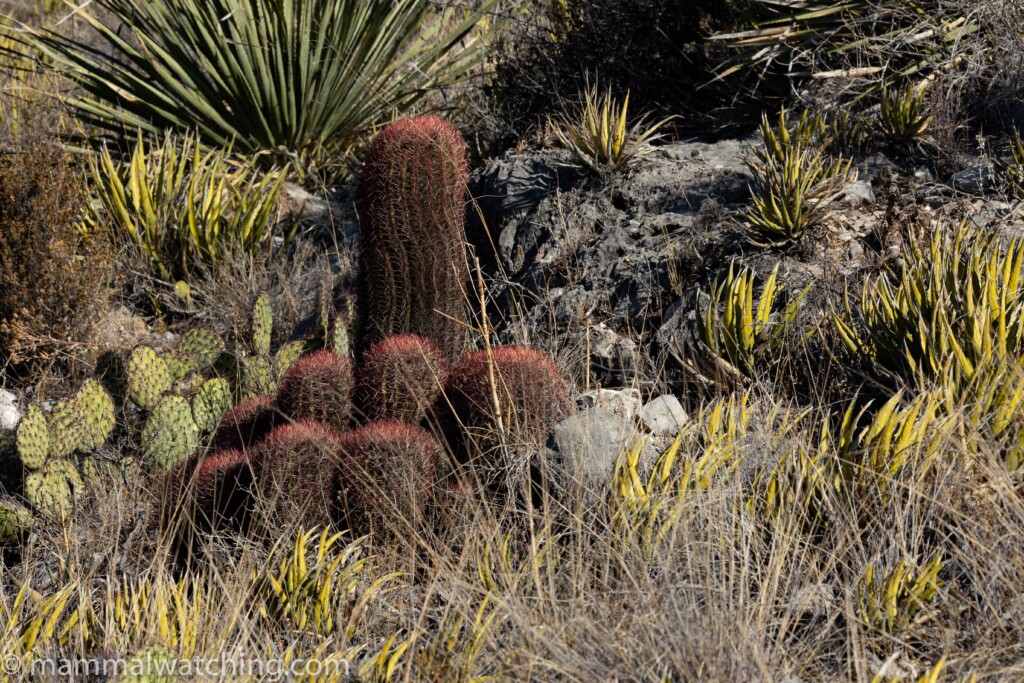
After setting all 80 traps we explored a short mine tunnel.
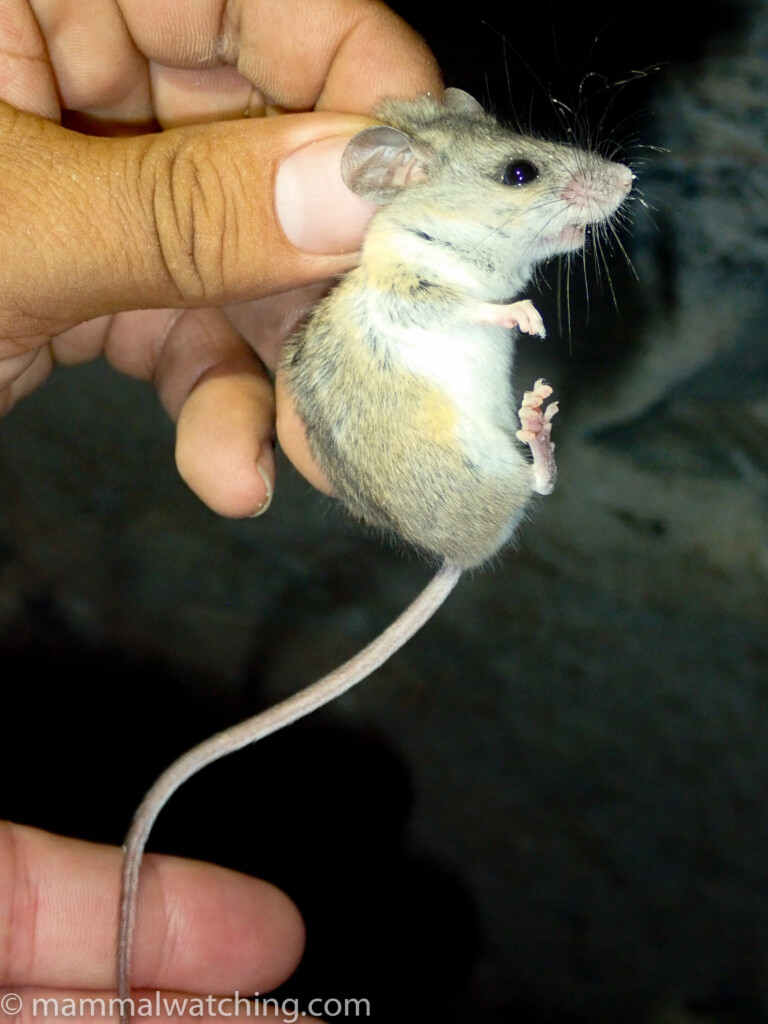
Cactus Mouse, Peromyscus eremicus
Juan caught a Cactus Mouse by hand inside the tunnel and though there were several bats zipping around at dusk we could find only one roosting: a Big Brown Bat.
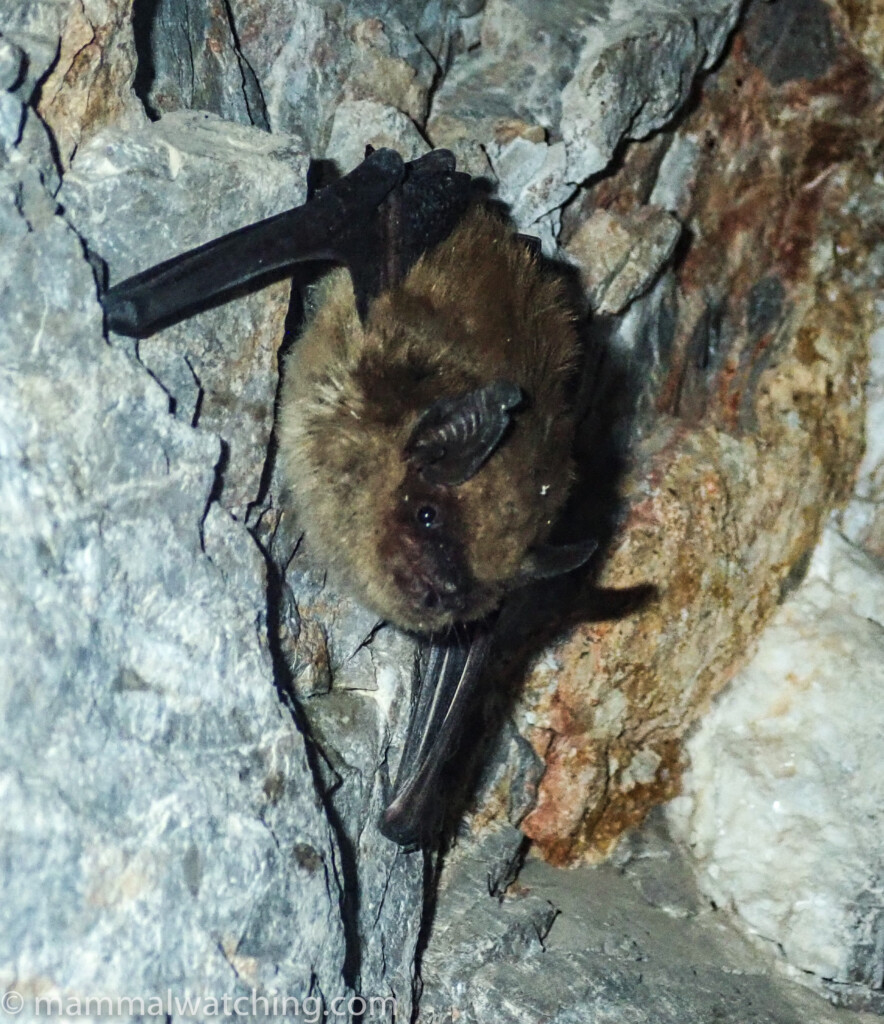
Big Brown Bat, Eptesicus fuscus
We had only two captures in the traps the next morning. But both were exciting. Hooper’s Deer Mouse has been found nearby in similar habitat, but it is an almost unknown species with very few records. But after a process of elimination this animal appeared to be Peromyscus hooperi.
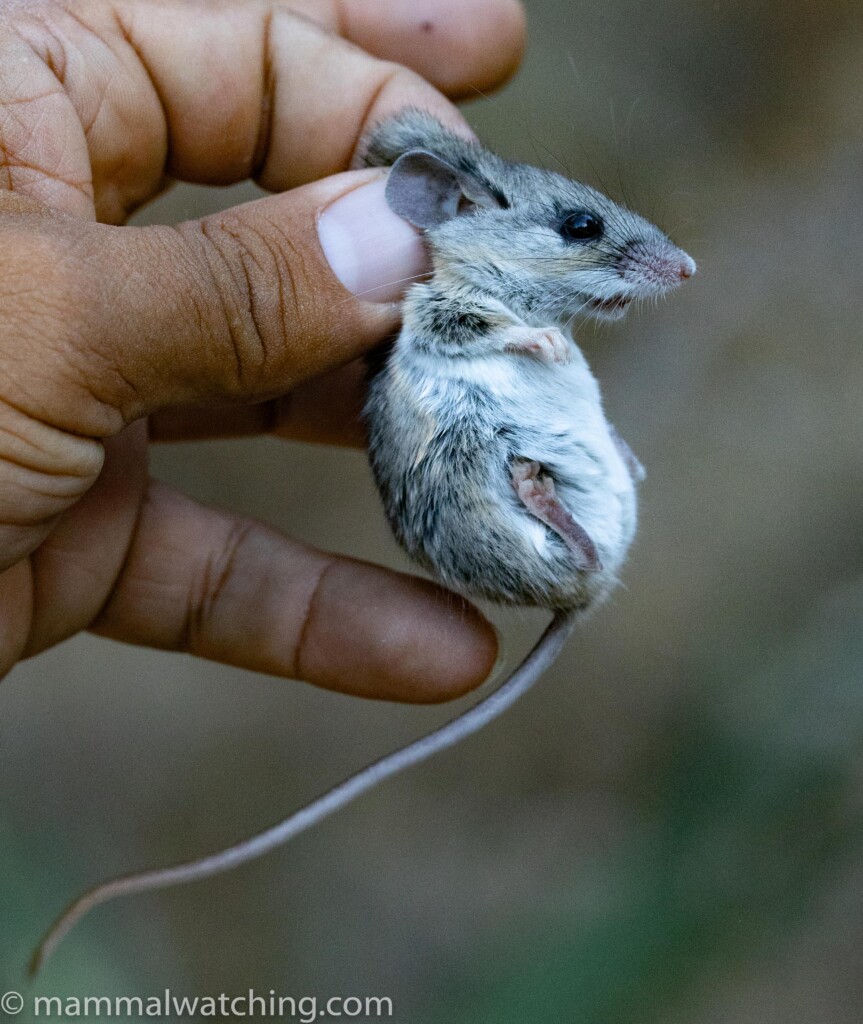
Hooper’s Deer Mouse, Peromyscus hooperi
It was caught in our very first trap. We could not find any pictures of Hooper’s Deermouse online but David Huckaby from the American Society of Mammalogists kindly sent our images to David Schmidly and Robert Bradley, who are the world’s experts on the species. Although they could not confirm this was Hooper’s Deer Mouse without having the animal in the hand, they felt “it could be that species”. Which I suspect is about as conclusive an ID as we could have hoped for (and good enough for me!).
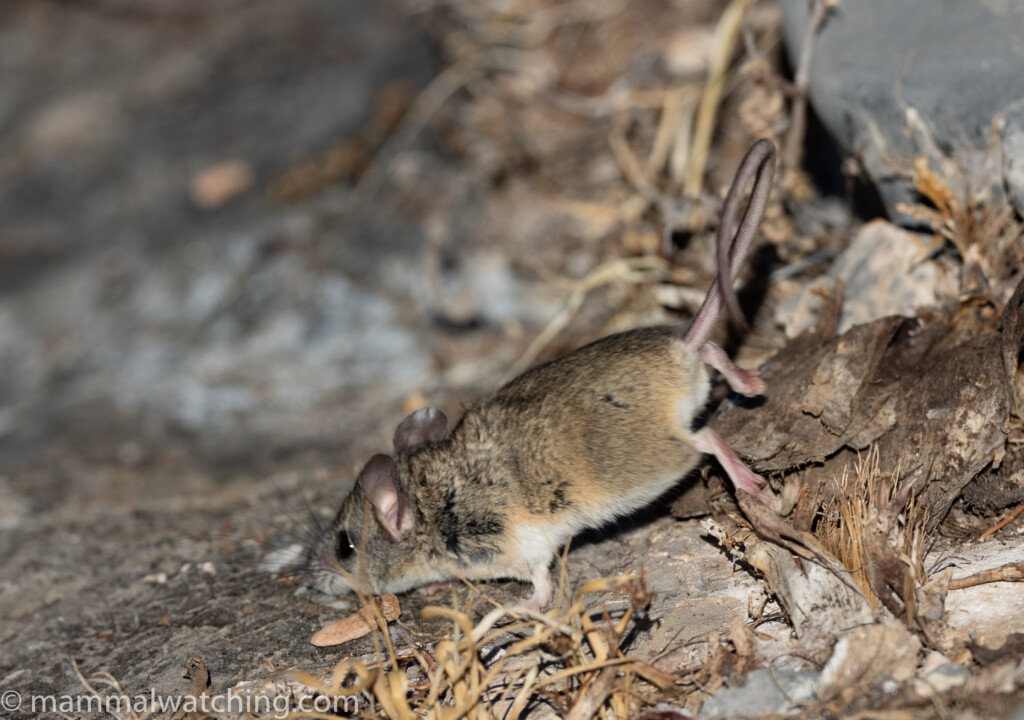
Hooper’s Deer Mouse, Peromyscus hooperi
Twenty minutes later we had another capture. Also exciting: Goldman’s (or Pygmy) Woodrat.
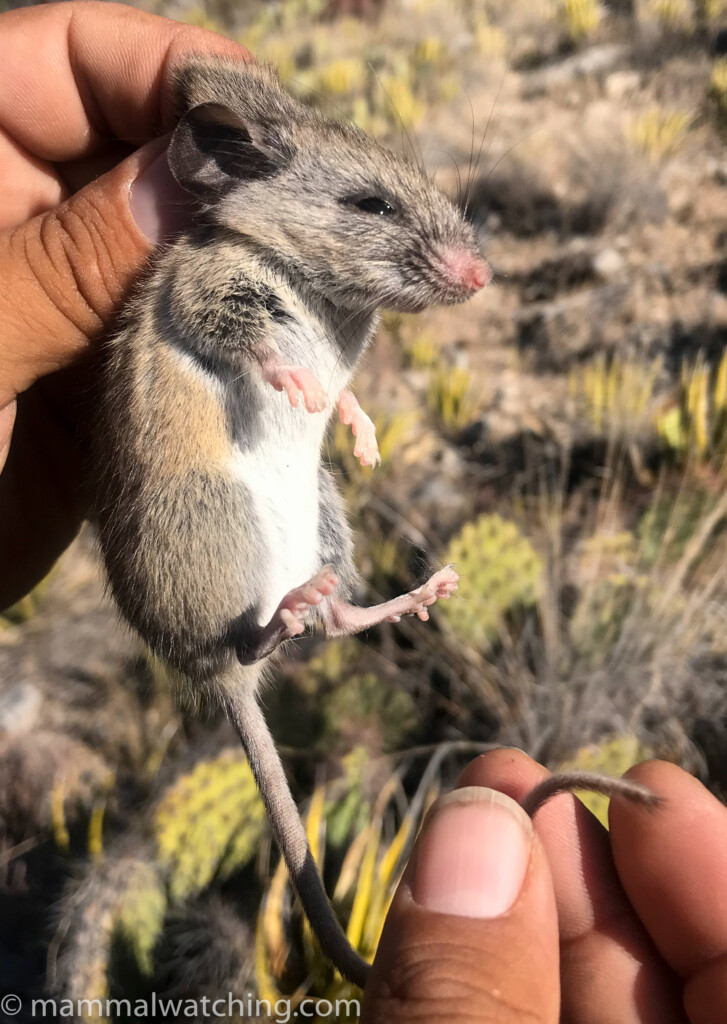
Goldman’s Woodrat, Neotoma goldmani
This is also an uncommon species and one I was hoping to see.
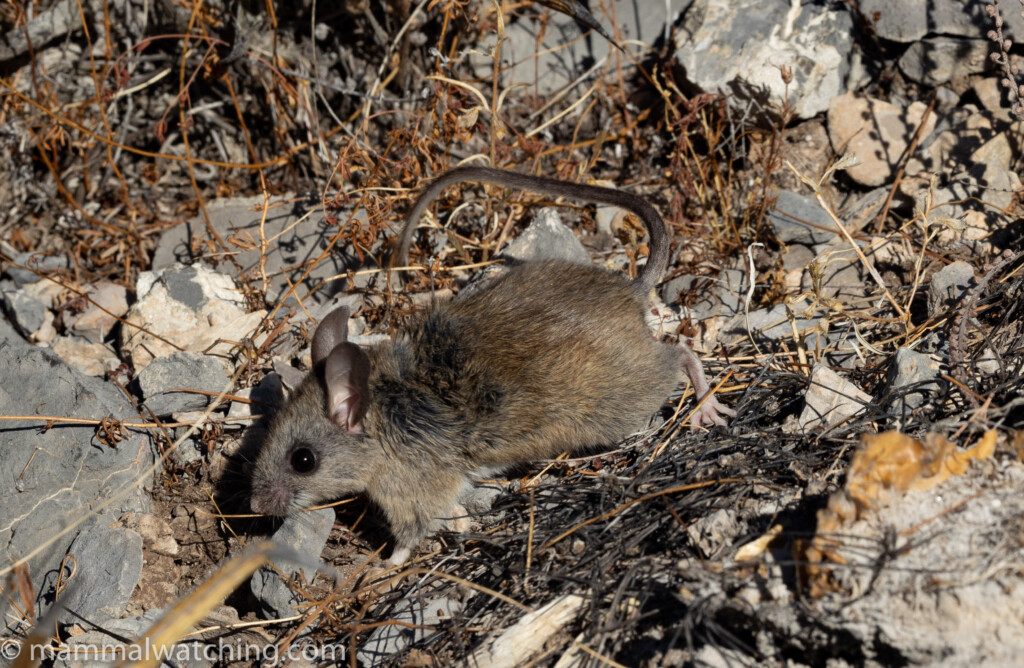
Goldman’s Woodrat, Neotoma goldmani
We checked the mineshaft and there was only one bat roosting. But a good one. My first Mexican Big-eared Bat, though we had to check it carefully before deciding on an ID because Townsend’s Big-eared Bats are also in the area.
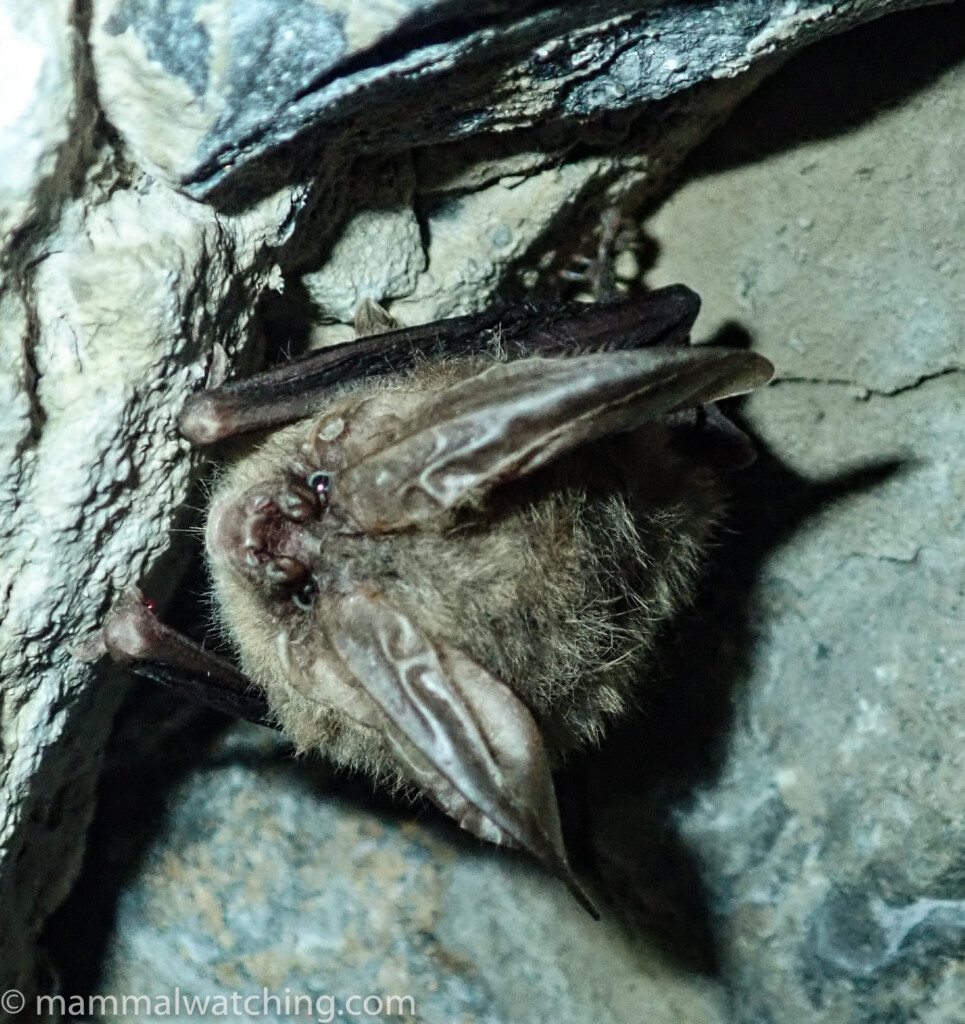
Mexican Big-eared Bat, Corynorhinus mexicanus
This is a species we had been planning to catch the next day, so it was good to get it in the bag early (very good it turns out!). It was also one of my most wanted species for the trip. The taxonomy of this species is also in a bit of flux and the bats in this area may in fact be a different species (which is why we were going to catch more the following day). Stay tuned!
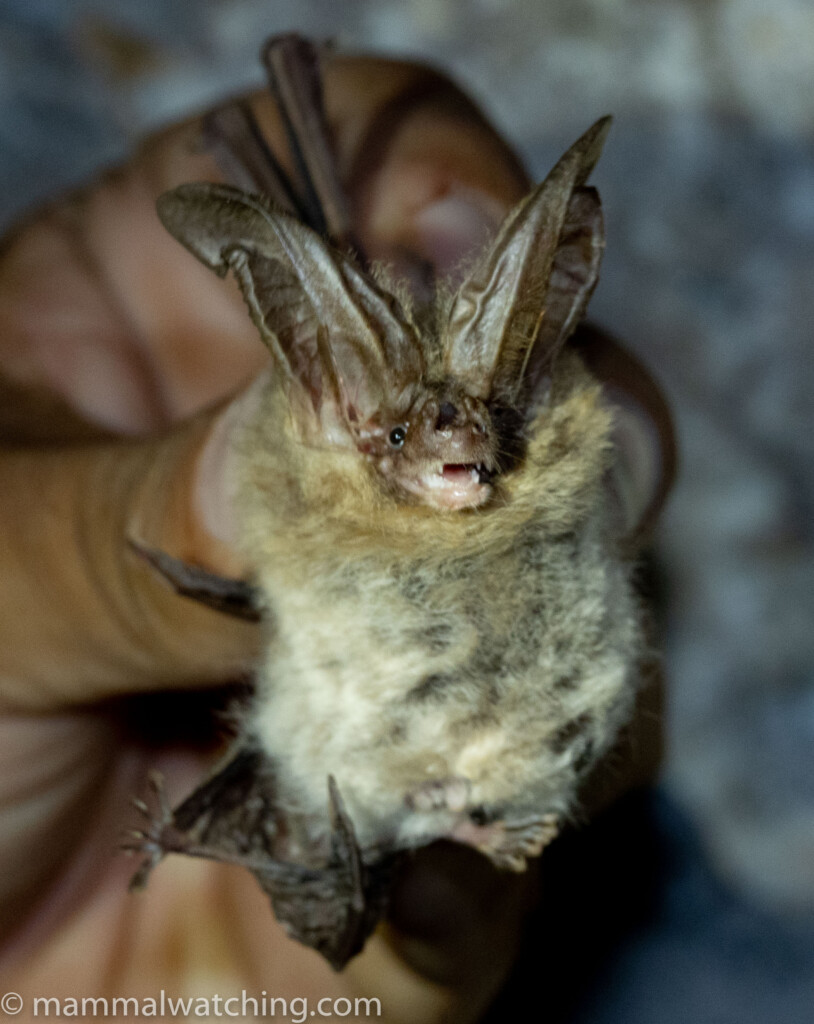
Mexican Big-eared Bat, Corynorhinus mexicanus
Distinguishing this species from Townsend’s Big-eared Bat requires counting the number of segments in the tail membrane. Though apparently, when roosting, Mexicanus often to hold its ears curled backwards, while Townsendi holds them straight. This is not a 100% reliable ID feature, but it can help.
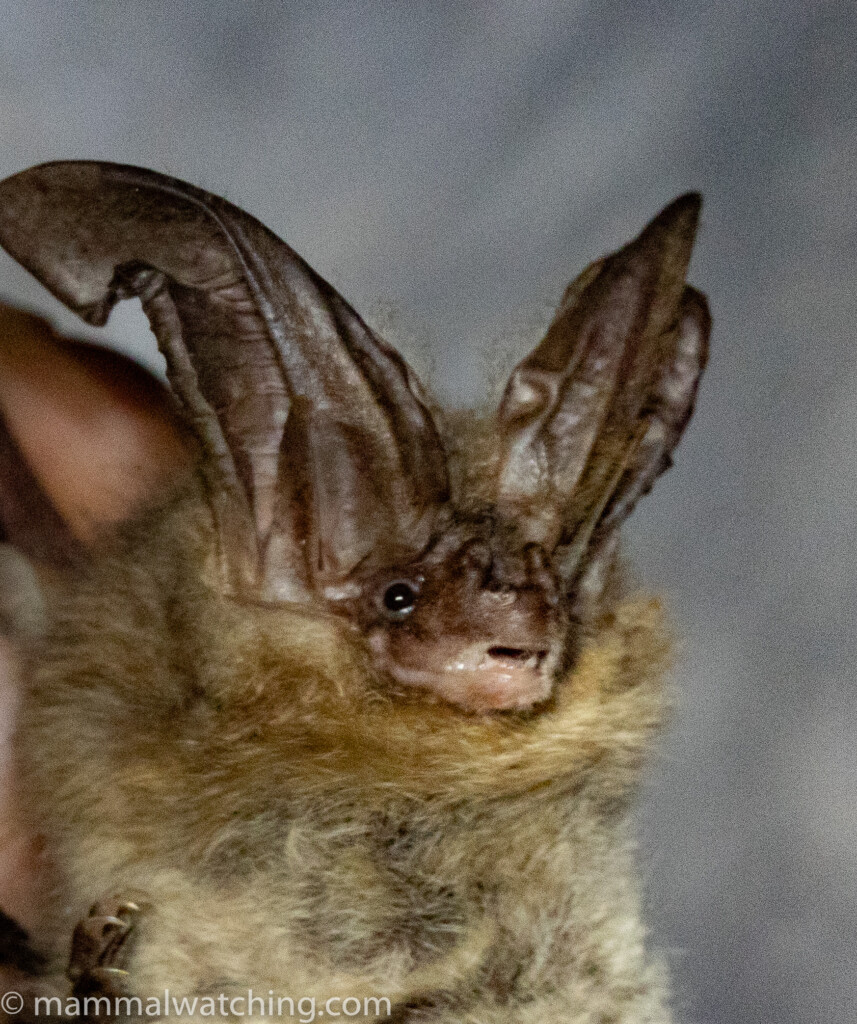
Mexican Big-eared Bat, Corynorhinus mexicanus
Chapultepec
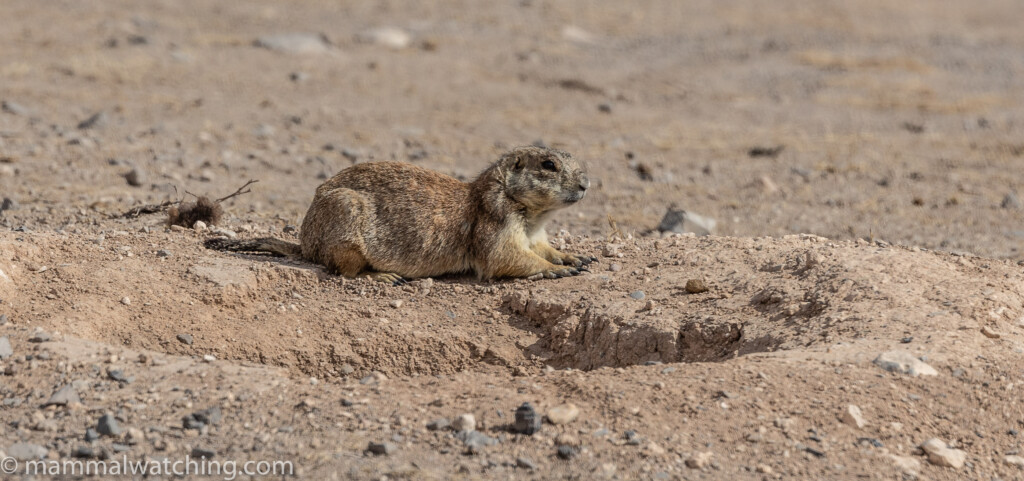
Mexican Prairie Dog, Cynomys mexicanus
Back in Saltillo we met up mid-afternoon with two of Juan’s friends: Isaachar Leonardo, who is studying bats, and Silvino Eduardo, a local scientist. They were going to accompany us for the next two nights primarily to look for bats.
We drove an hour or less to Chapultepec and checked into the very nice Huitzlin Hotel, a kilometre from the small nature reserve we would be batting in that night.
It was the Easter weekend, and the area was busy, presumably with people from Monterrey who wanted to escape the city. Some of them may also have wanted to see a Black Bear: there were, according to the signs, a healthy population in and around the nature reserve.
Our main target here was the tiny Flat-headed Myotis. One of Mexico’s rarest bats, by the mid-1990s it was thought to have become extinct but was rediscovered in 2004. They have rather specific habitat requirements: mixed forest of Pine and Yucca cactus (Pinus cembroides and Yucca carnerosana). The myotis roost in the cactus leaves.
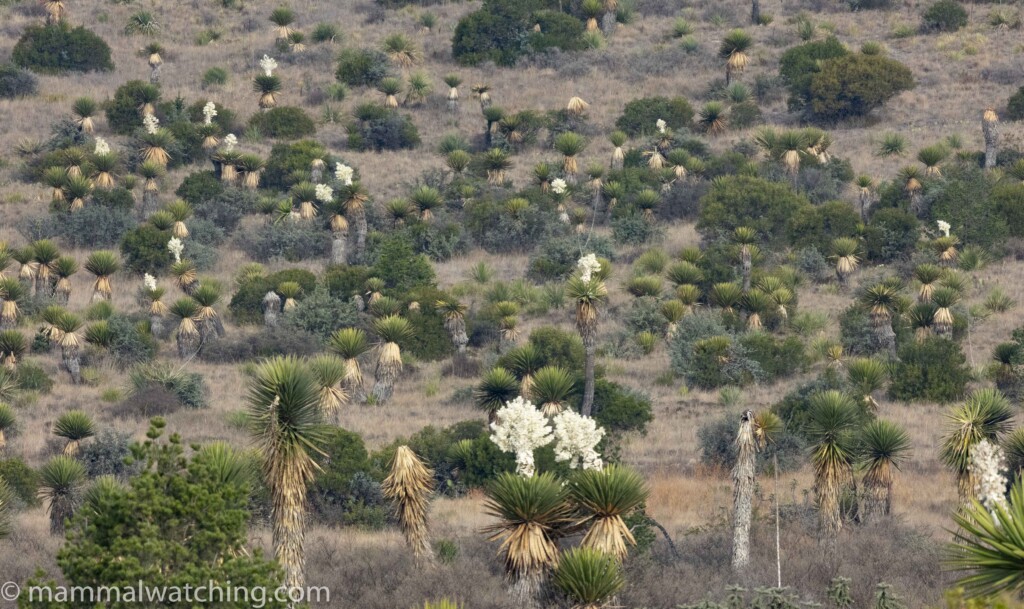
Flowering Yucca
This too was beautiful forest. Constellations of flowering cactuses lit up the hillsides. There seemed no shortage of bat habitat.
I was less impressed with the netting spot.
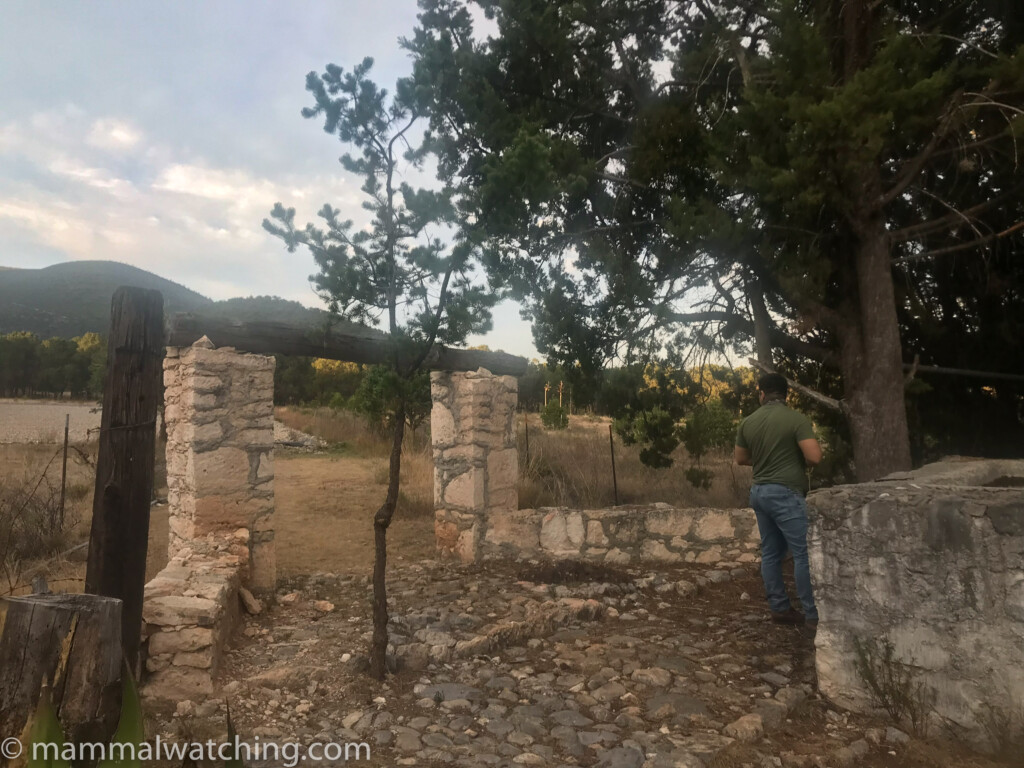
Though Issachar and Silvino seemed to know what they were doing, my heart sank when I saw the place they wanted to set the nets. A small stone trough, only 3 x 2metres. They had caught Flat-headed Myotis before, in nets across the much larger trough next to this one. But that large trough was now empty. It was hard to believe that any bats would make the effort to visit this pathetic puddle.
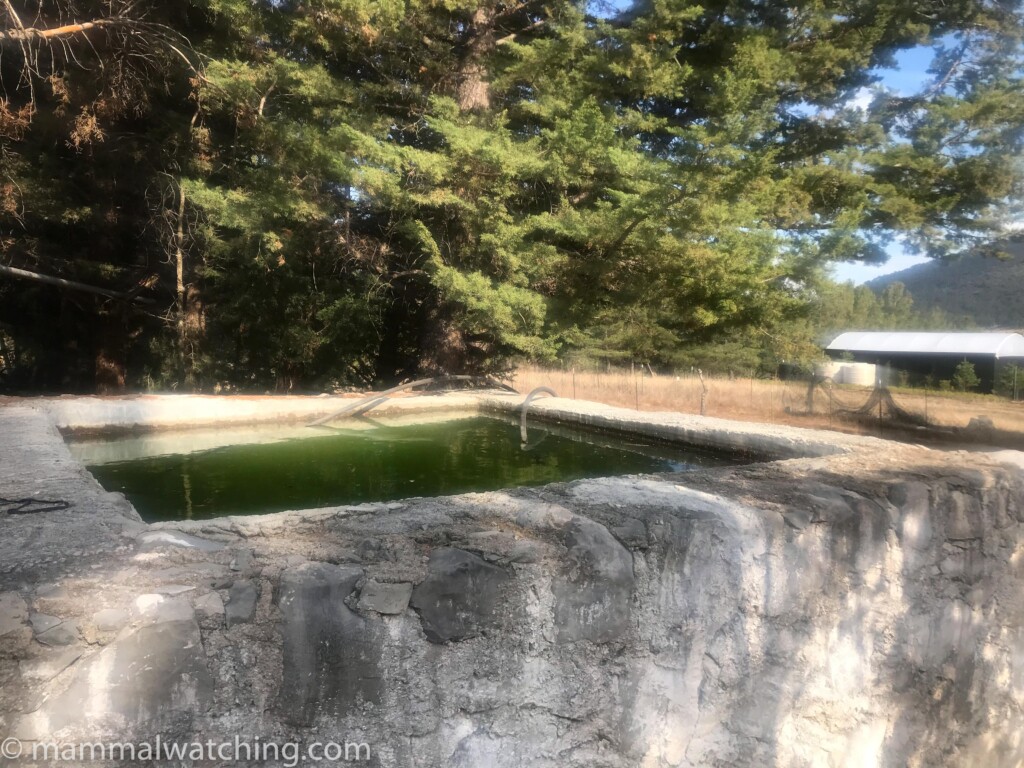
I should have known better. It was bumper batting that night. Issachar and Silvino went to check the nets shortly after sunset. I stayed behind to set up my camera. When they didn’t return after 20 minutes I wandered up to the nets, imaging they were staring at the beautiful star scape or enjoying a beer, free from my annoying questions. Wrong! They had bats. All the bats.
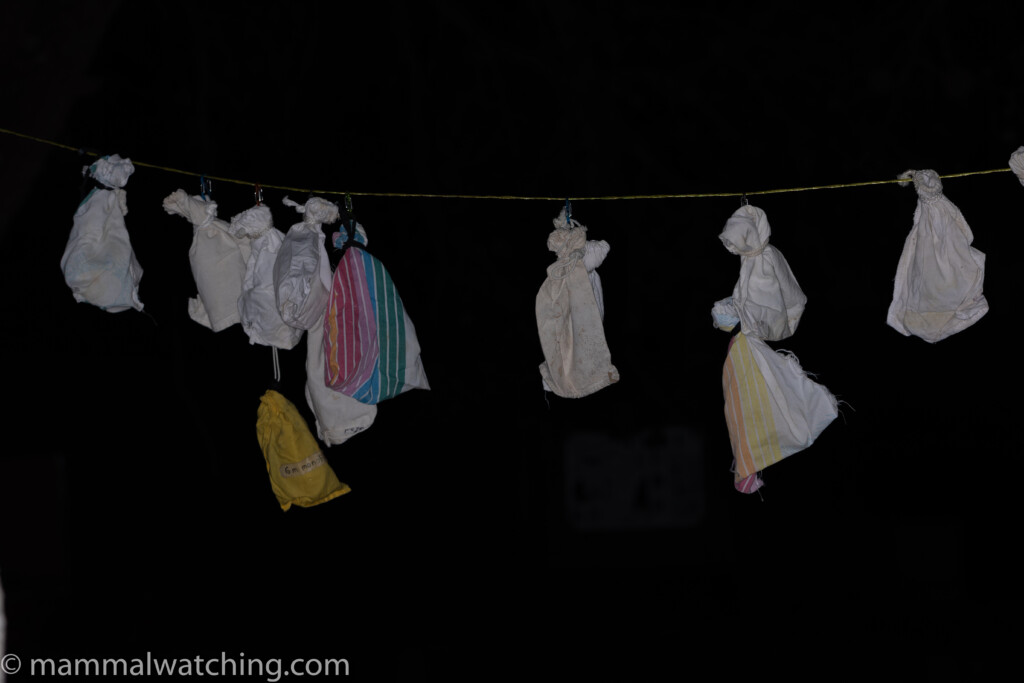
They caught many Flat-headed Myotis.
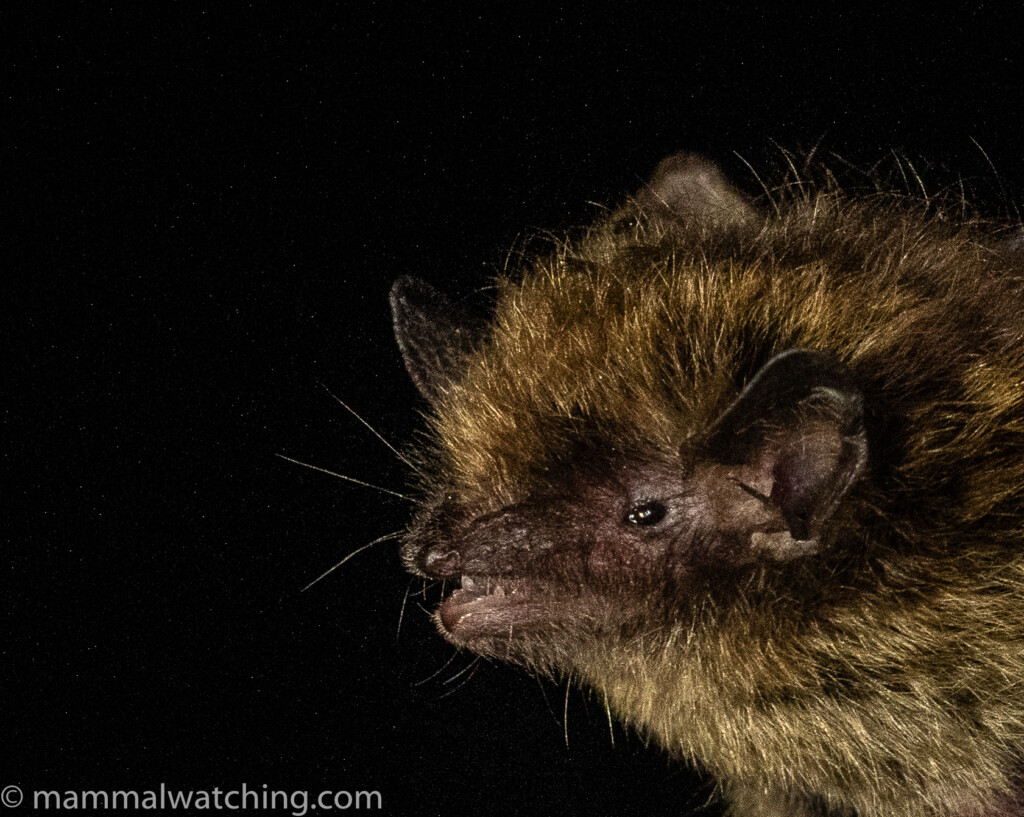
Flat-headed Myotis, Myotis planiceps
Running a finger gently over the skull confirmed how flat-headed they indeed are.
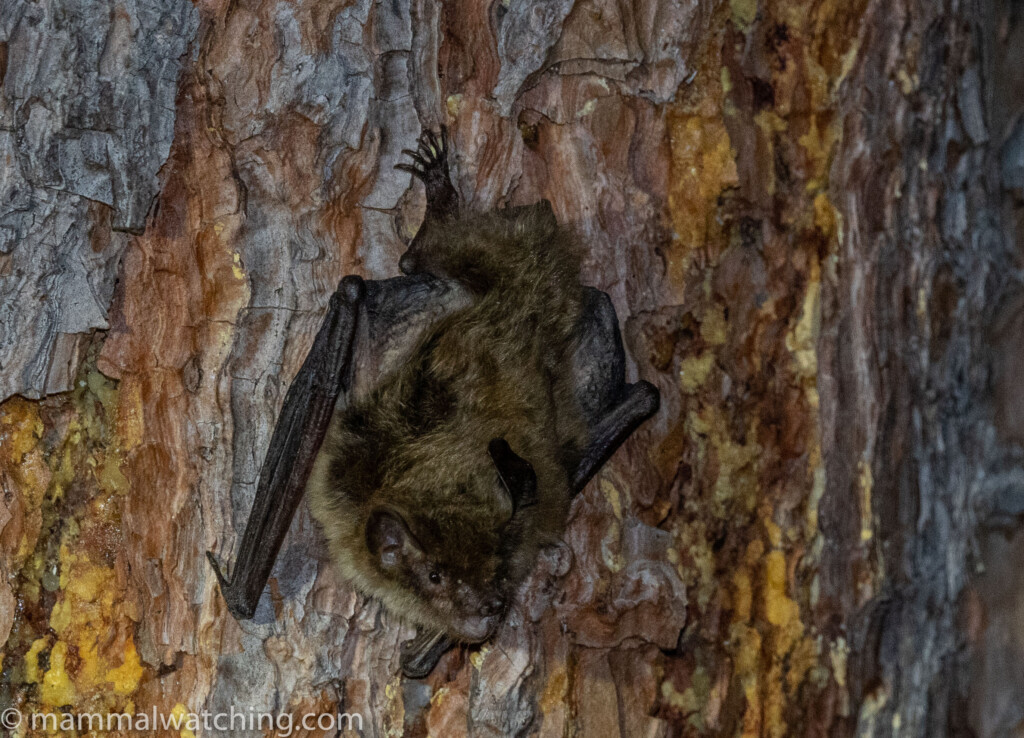
Flat-headed Myotis, Myotis planiceps
They also caught several Fringed Myotis.
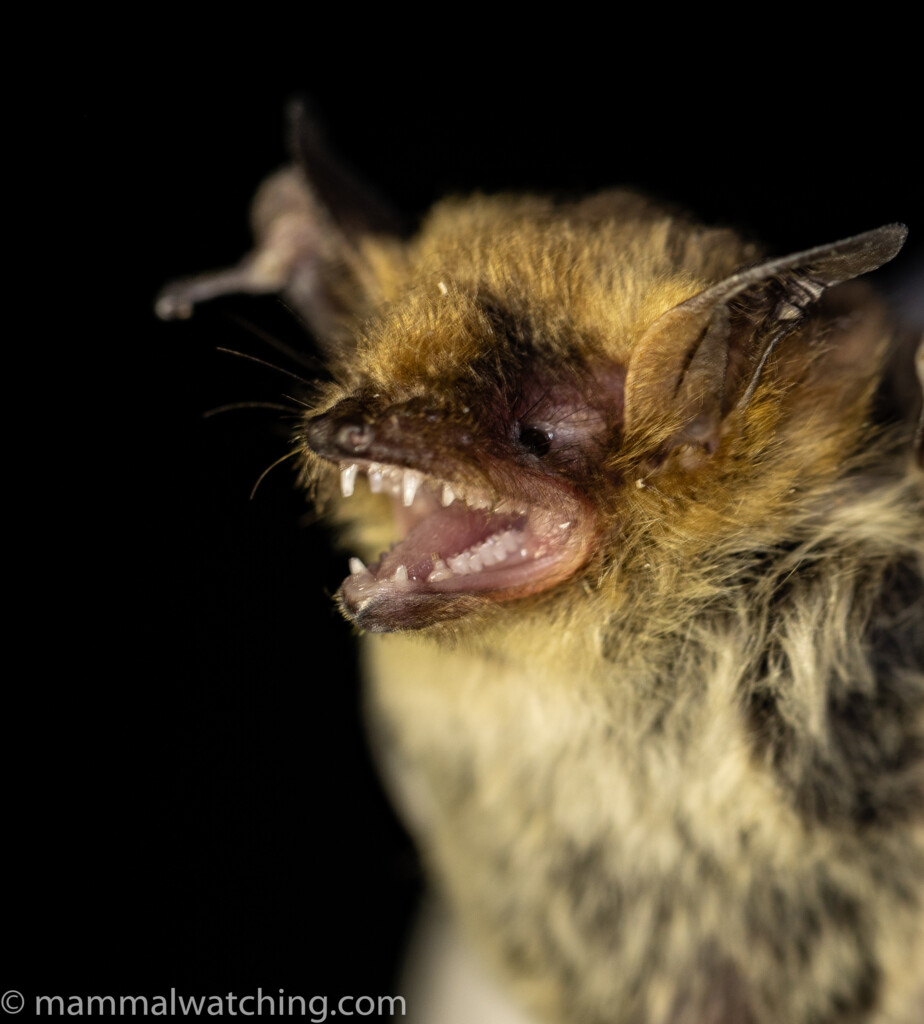
Fringed Myotis, Myotis thysanodes
The small fringe of hair along the edge of the tail membrane (the uropatagium) gives them their name.
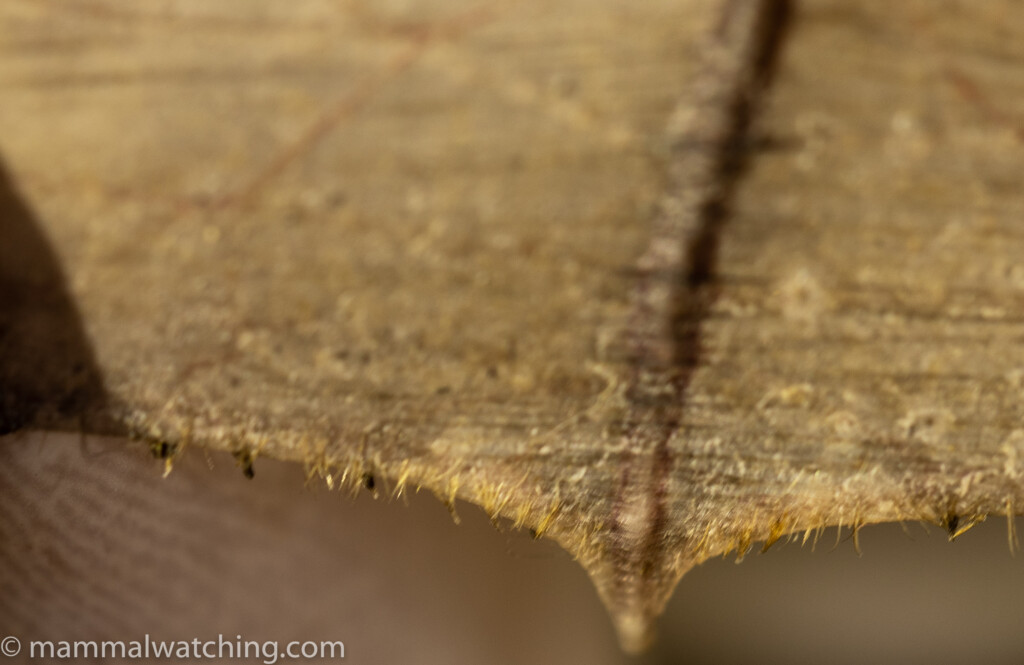
Fringed Myotis, Myotis thysanodes
And they caught a few Western Small-footed Myotis.
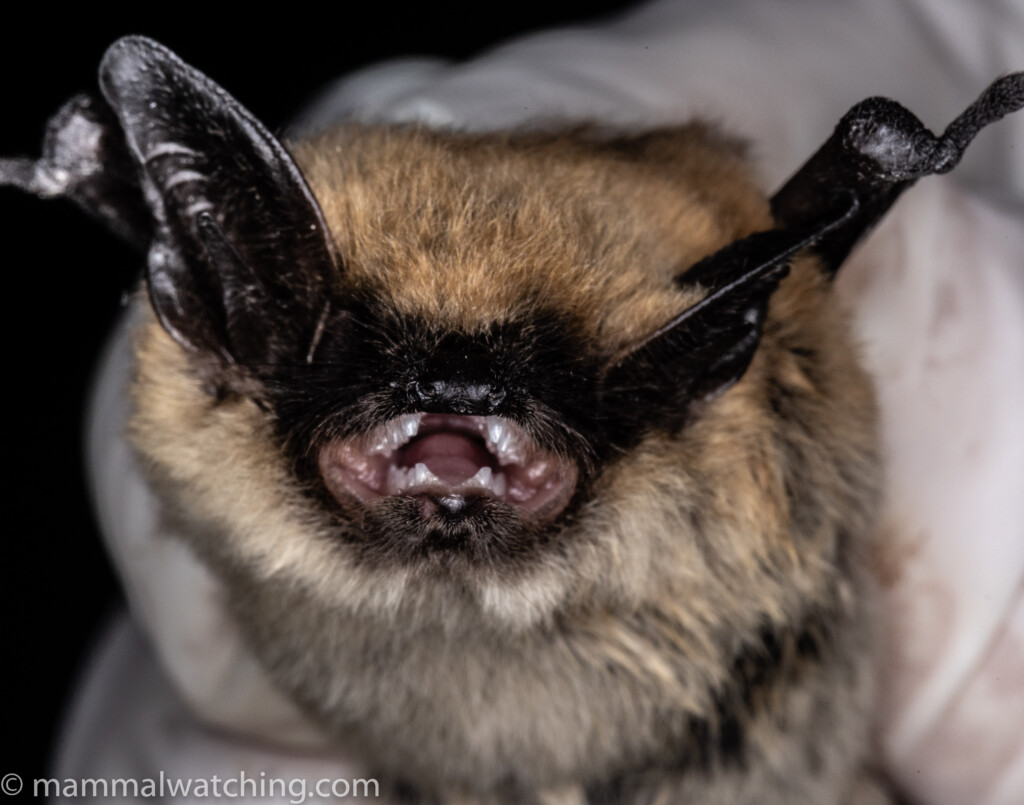
Western Small-footed Myotis, Myotis ciliolabrum
We also caught a couple of Big Brown Bats, and there was another roosting in an abandoned hut close to the nets.
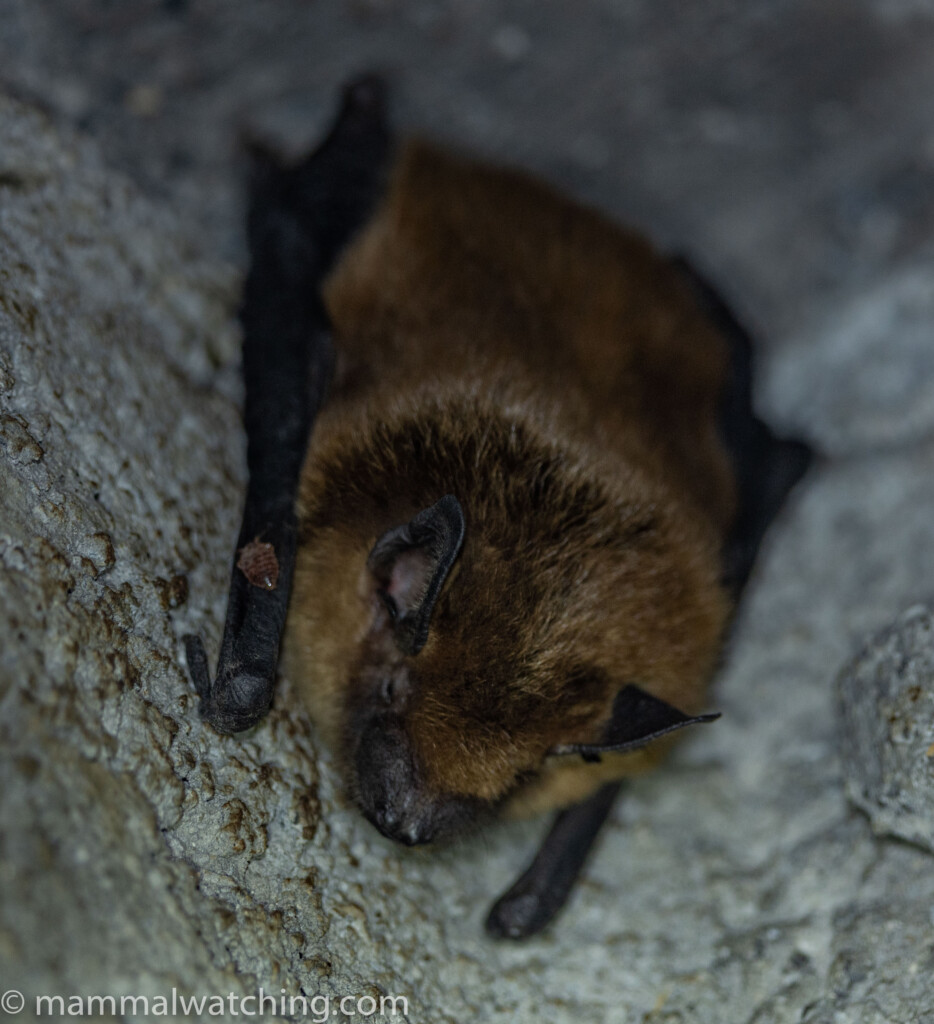
Big Brown Bat, Eptesicus fuscus
And we caught a lone Townsend’s Big-eared Bat.
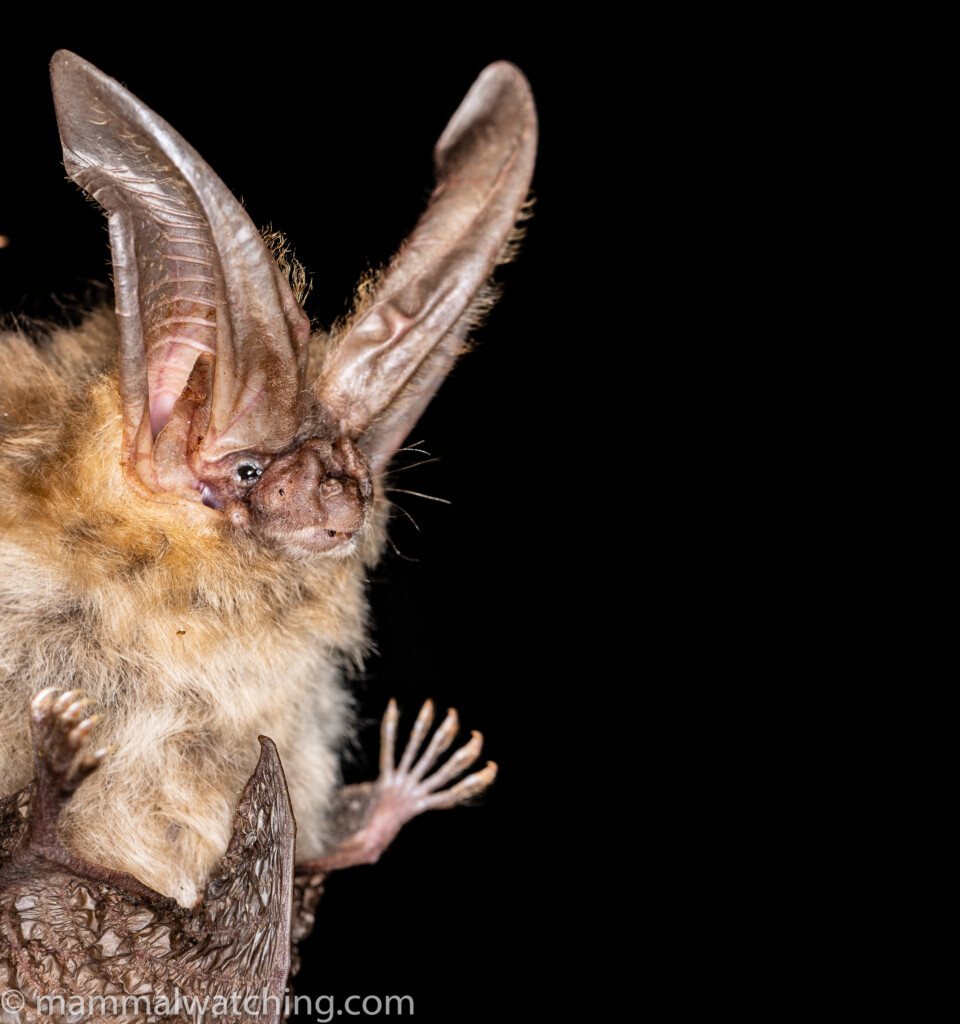
Townsend’s Big-eared Bat, Corynorhinus townsendii
A remarkably successful night’s batting given the tiny amount of water at its epicentre.
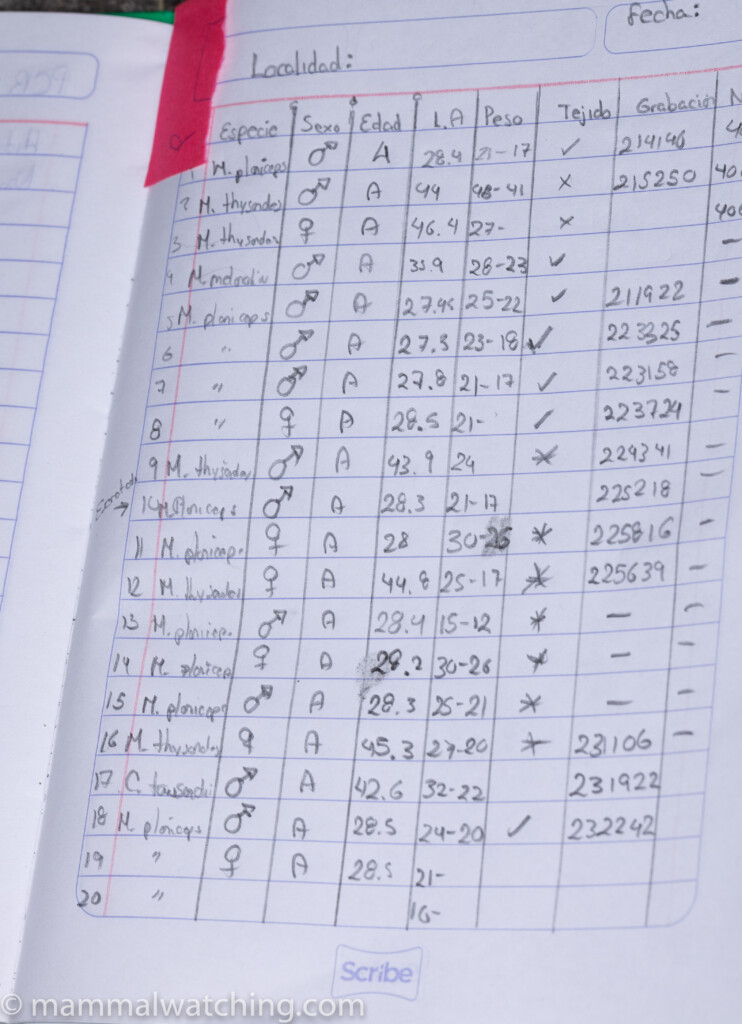
Bat captures
The next morning we checked the Sherman traps that Juan had set in nearby Rancho Los Angeles (again you would need to talk to Juan to arrange access).
A line of 40 traps on a slope though mixed pine and yucca produced my first Mearns’s Grasshopper Mouse, which I was told are the commonest capture there.
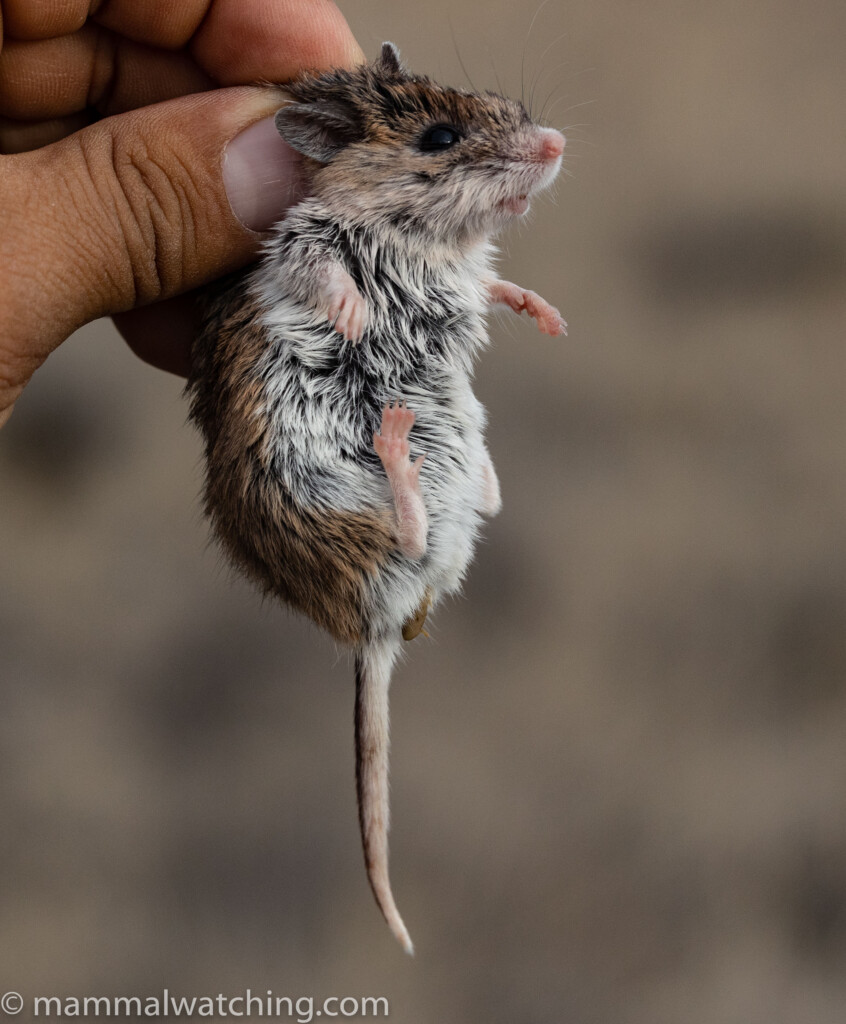
Mearns’s Grasshopper Mouse, Onychomys arenicola
Along with a Fulvous Harvest Mouse.
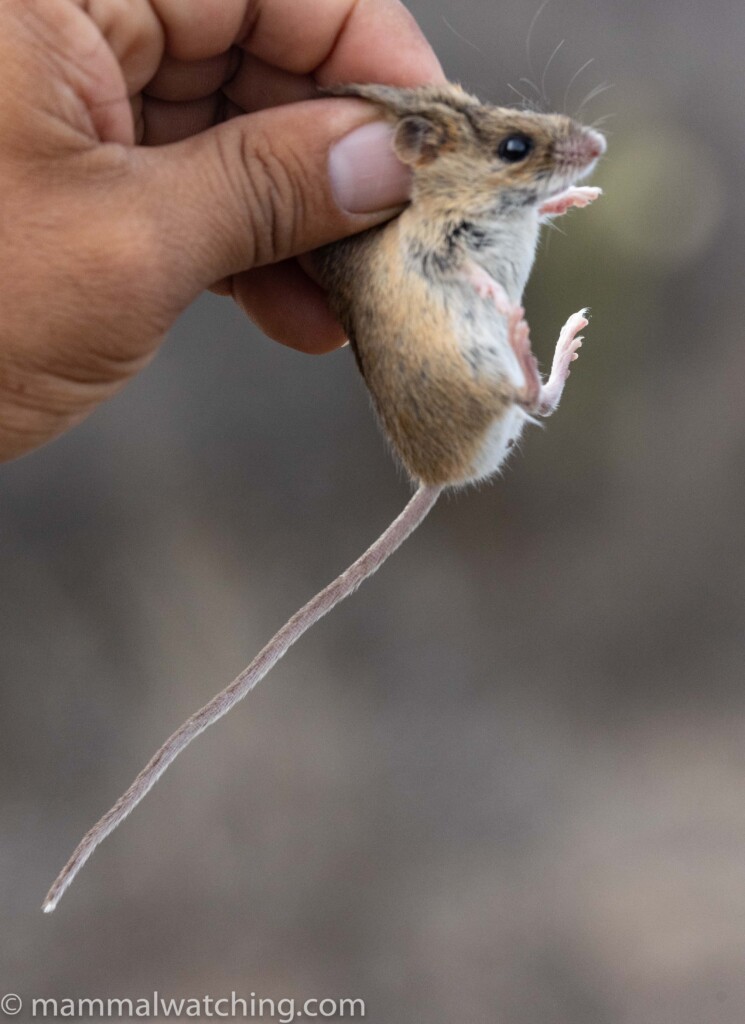
Fulvous Harvest Mouse, Reithrodontomys fulvescens
And a Cactus Mouse.
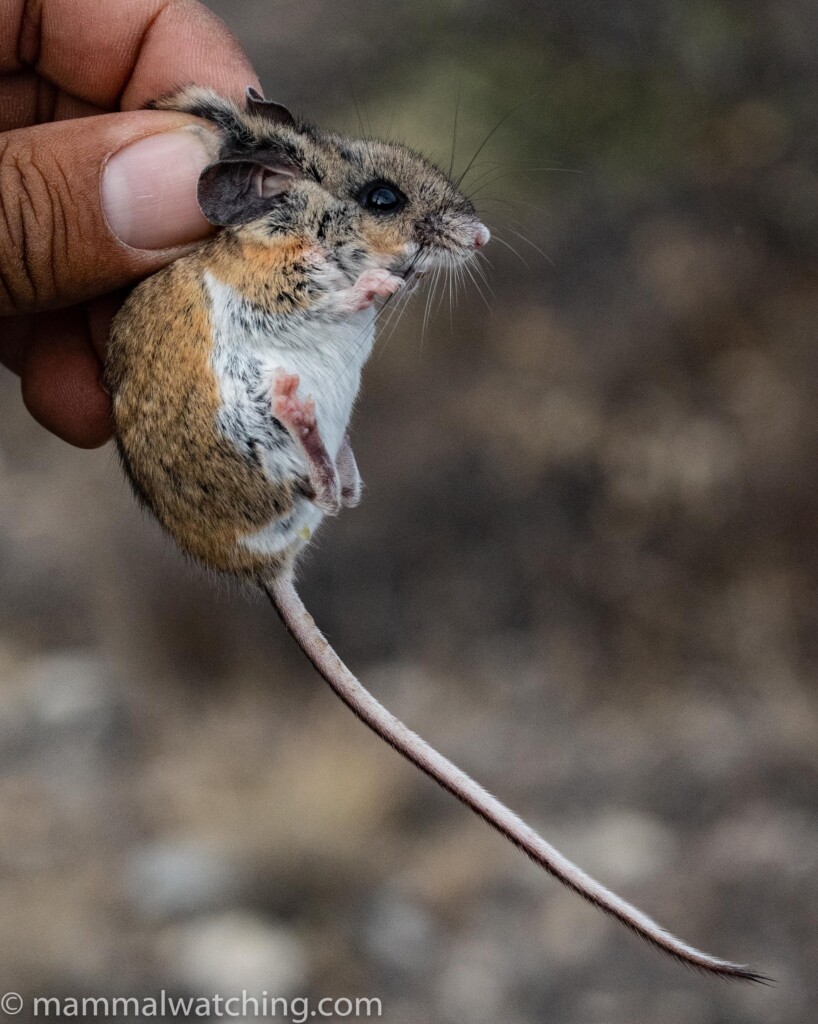
Cactus Mouse, Peromyscus eremicus
In 40 traps along the valley bottom we caught more Cactus Mice plus two Rock Mice, a lifer. We saw some White-tailed Deer.
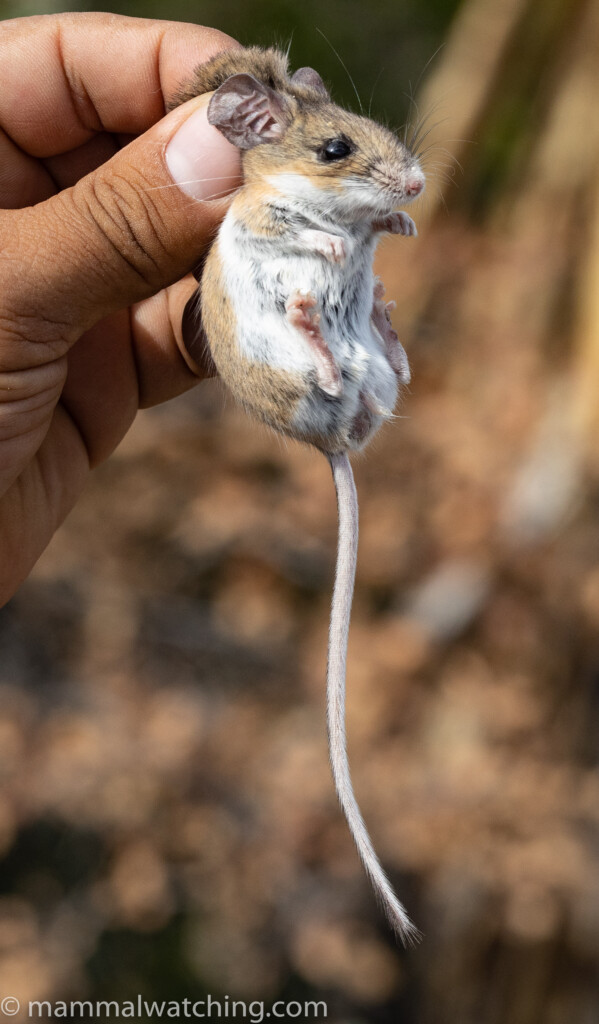
Rock Mouse, Peromyscus difficilis
The Rock Mice have enormous ears for a deer mouse.
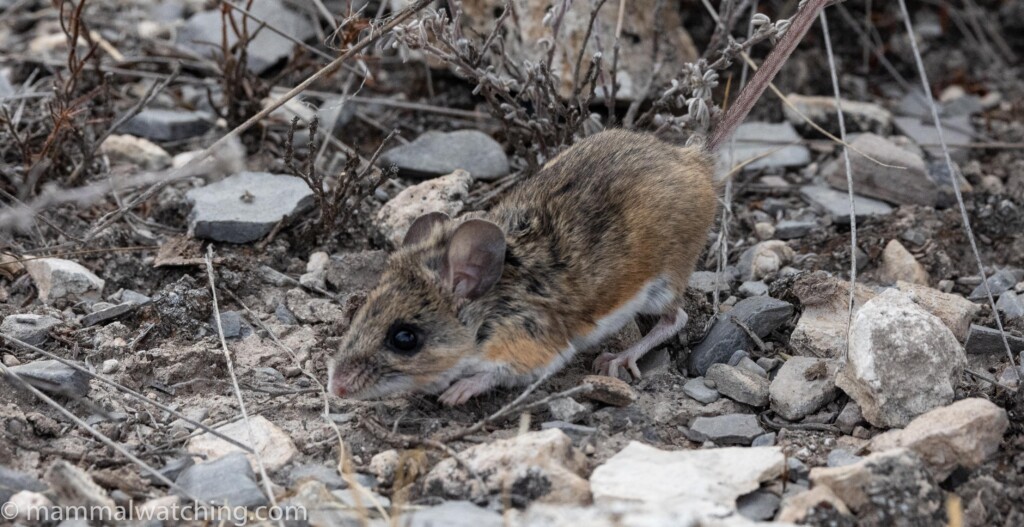
Rock Mouse, Peromyscus difficilis
The ranch is a reliable site for the endangered Mexican Prairie Dog, which now occupies a tiny fraction of its original range. We saw many near the entrance gate.
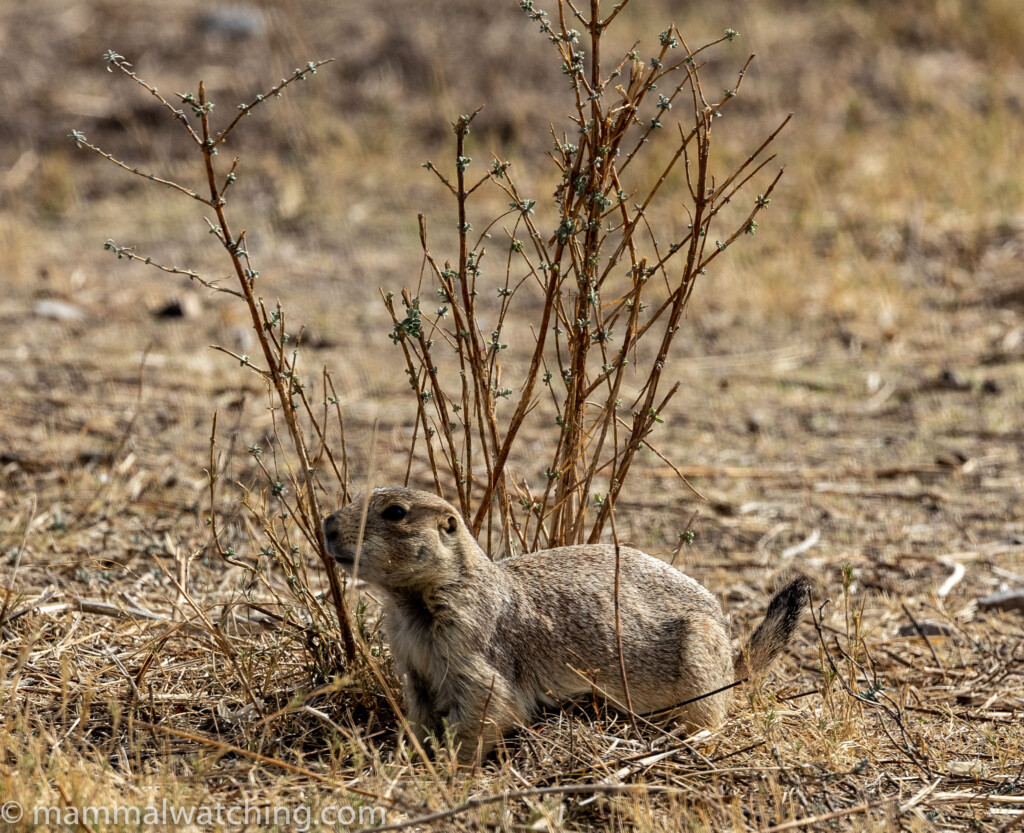
Mexican Prairie Dog, Cynomys mexicanus
Back at the Huitzlin Hotel I had spectacularly good pancakes for breakfast.
The rest of the day was a bit of a write-off. Juan had gotten two flat tires in our hire car while setting traps the night before and repairing them took most of the day. We had planned to go looking for Howell’s Chipmunk (Neotamias solvilagus) a recent split from Durango Chipmunk and known only from a nearby forest. But we also had plans to try to catch more Mexican Big-eared Bats in a cave an hour away. A late start, plus a failure to find fuel, meant we had to give up on chipmunking.
It was dark by the time we reached the community who guard the big-eared bat cave. We saw a pair of Coyotes en-route.
We still needed to arrange permits to catch the bats, but the local bureaucrat who regulated access to the cave was not answering his phone: most of the village were several beers into celebrating Easter.
We waited for 20 minutes and then returned to our hotel, deciding to catch more bats in the same spot as the night before. We caught the same set of species again.
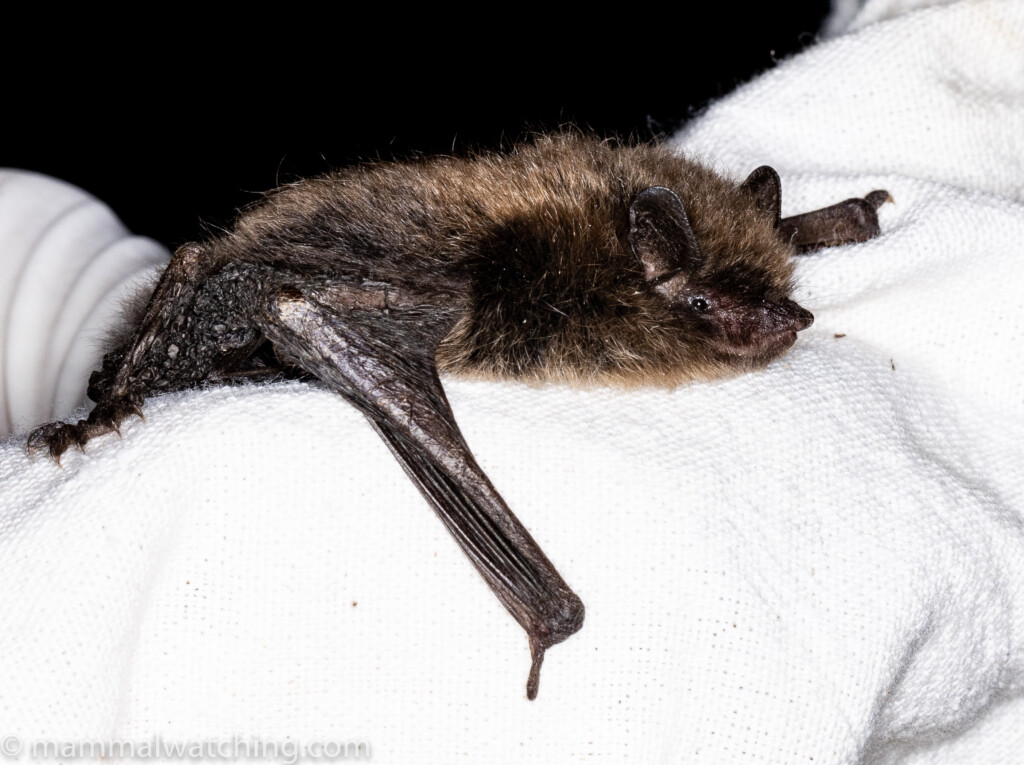
Flat-headed Myotis, Myotis planiceps
We set a few Sherman traps near the nets hoping to catch a Mexican Woodrat.
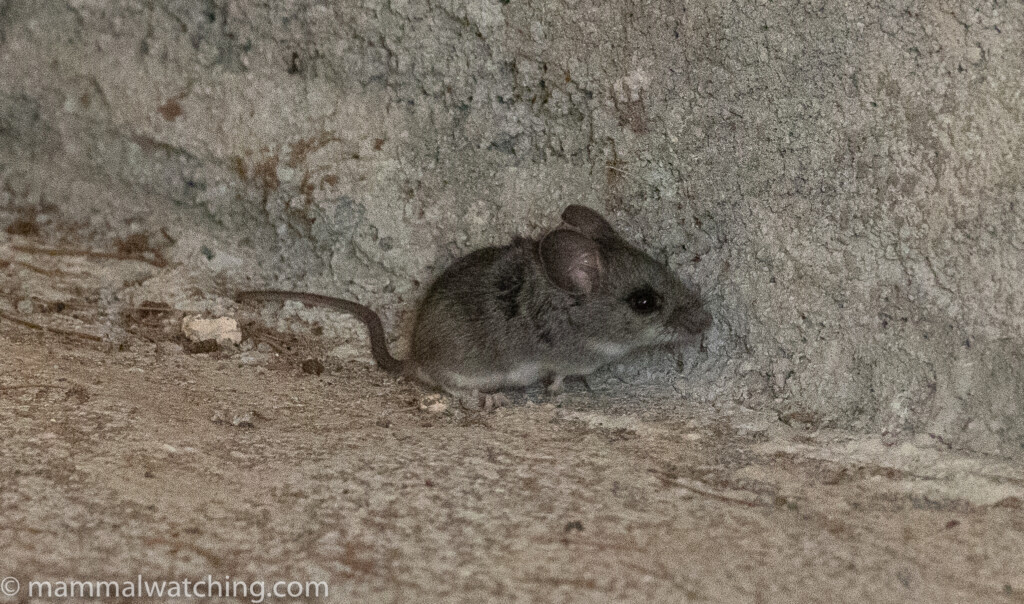
Rock Mouse, Peromyscus difficilis
No woodrats the next morning, but a couple of traps in an abandoned building had caught more Rock Deer Mice.
After more pancakes we headed to Bosques Monterreal, a touristy village in mountain forest an hour away, to try for the chipmunks. But it was Easter Saturday and there were a lot of people around. We didn’t see any chipmunks in 4 hours of searching, despite them supposedly being common .
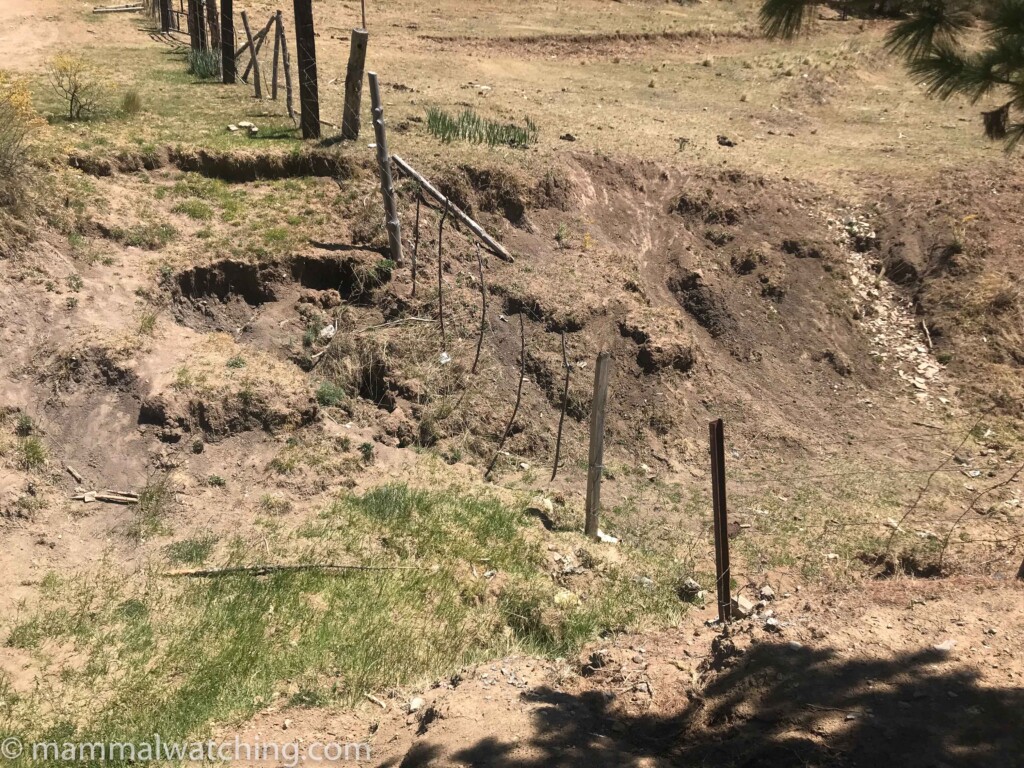
Howell’s Chipmunk, neotamias solvilagus, spot.
The dry creek pictured above (next to the parking area), was, we were told, a reliable spot for them. We did see a few Mexican Voles darting in and out of holes here while staking out the chipmunks.
In nearby forest we saw several Allen’s Squirrels.
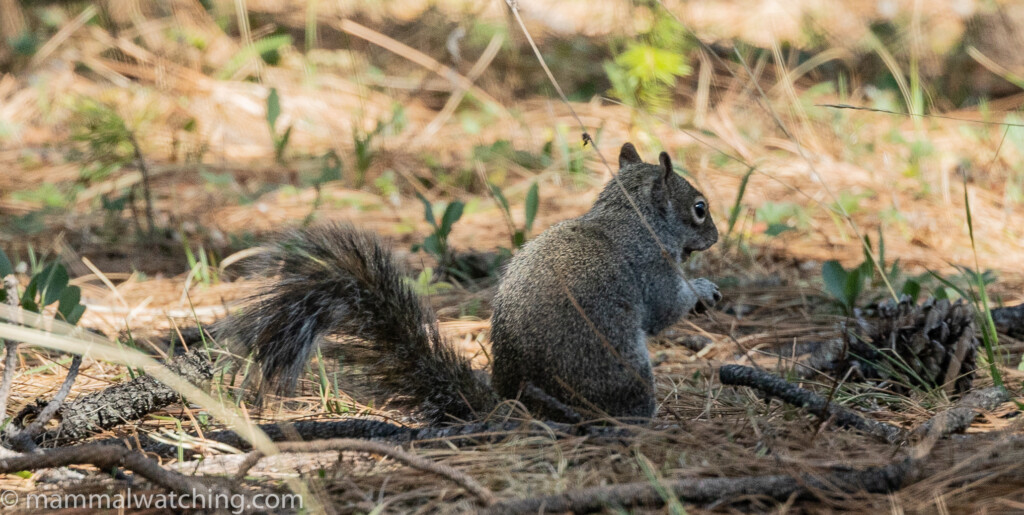
Allen’s Squirrel, Sciurus alleni
By mid-afternoon we had to give up on our chipmunk safari to return to Nuevo Leon.
Nuevo Leon
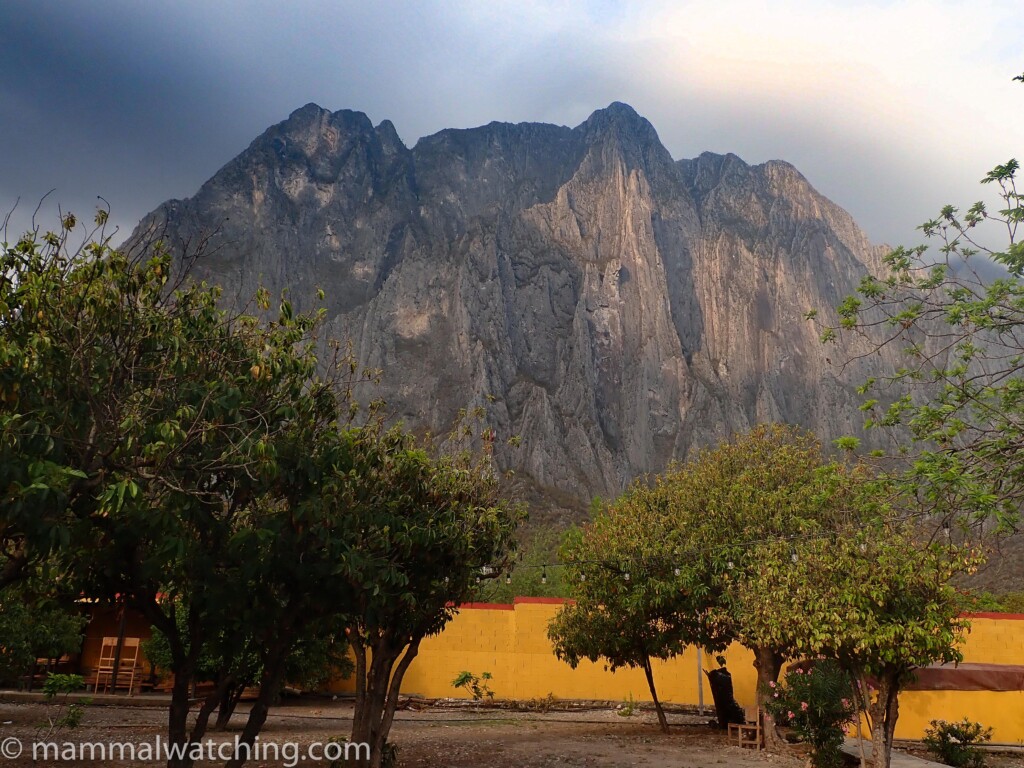
El Portrero Chico
We spent our last night in Hidalgo in the shadow of El Potrero Chico, Mexico’s answer to Yosemite. We arrived in time to set traps in the desert here, in an area Silvino recommended.
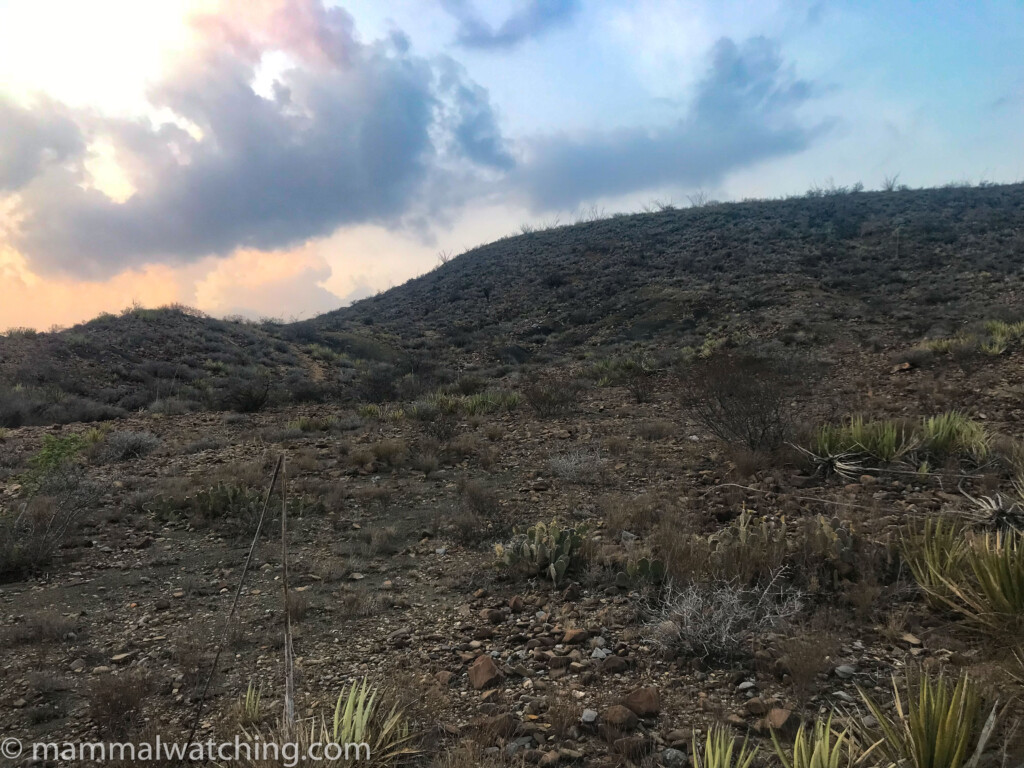
Trapping site near Mina
We had caught three species the next morning.
Merriam’s Kangaroo Rat.
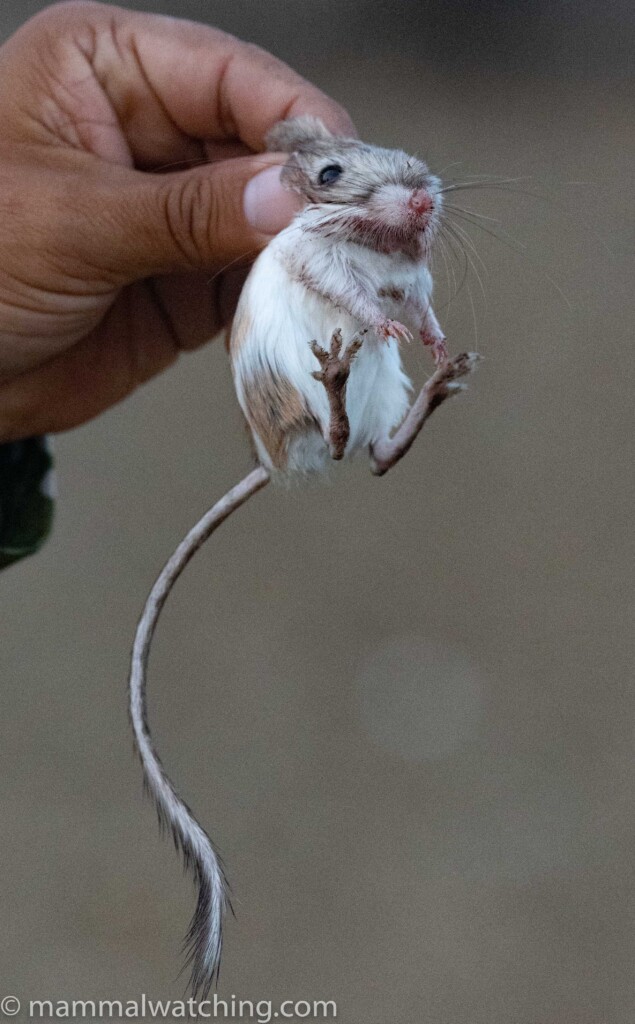
Merriam’s Kangaroo Rat, Dipodomys merriami
A White-ankled Mouse, a species that has been split recently. The flavour here was my first true Peromyscus pectoralis.
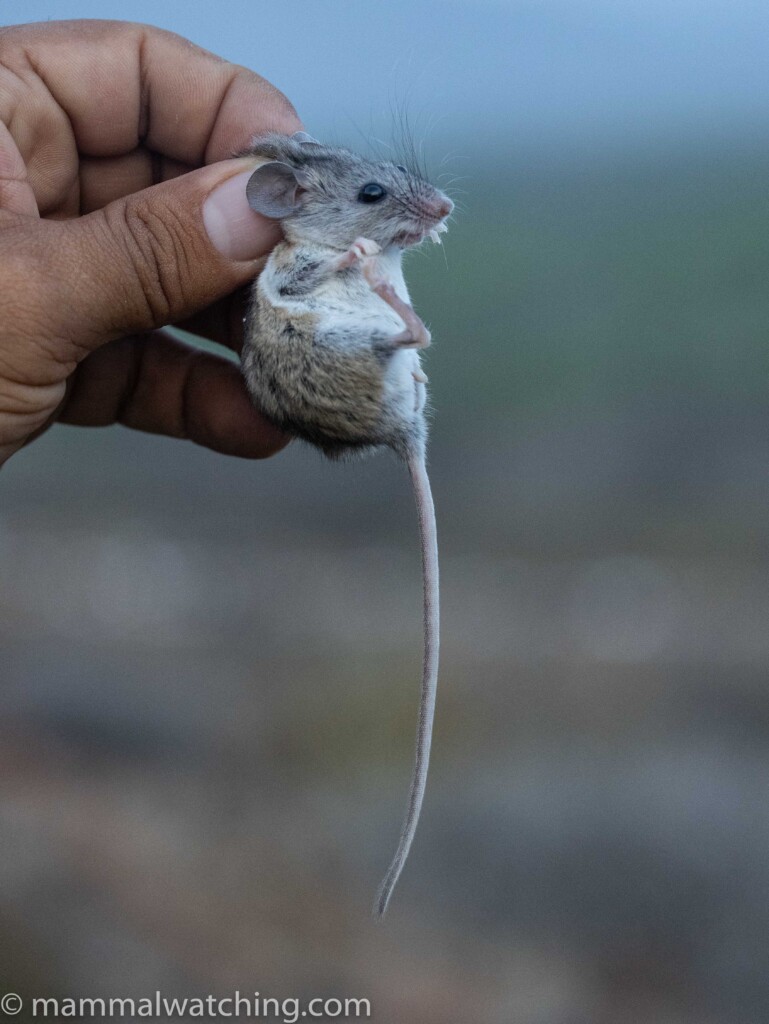
White-ankled Mouse, Peromyscus pectoralis
And a Nelson’s Pocket Mouse, another lifer.
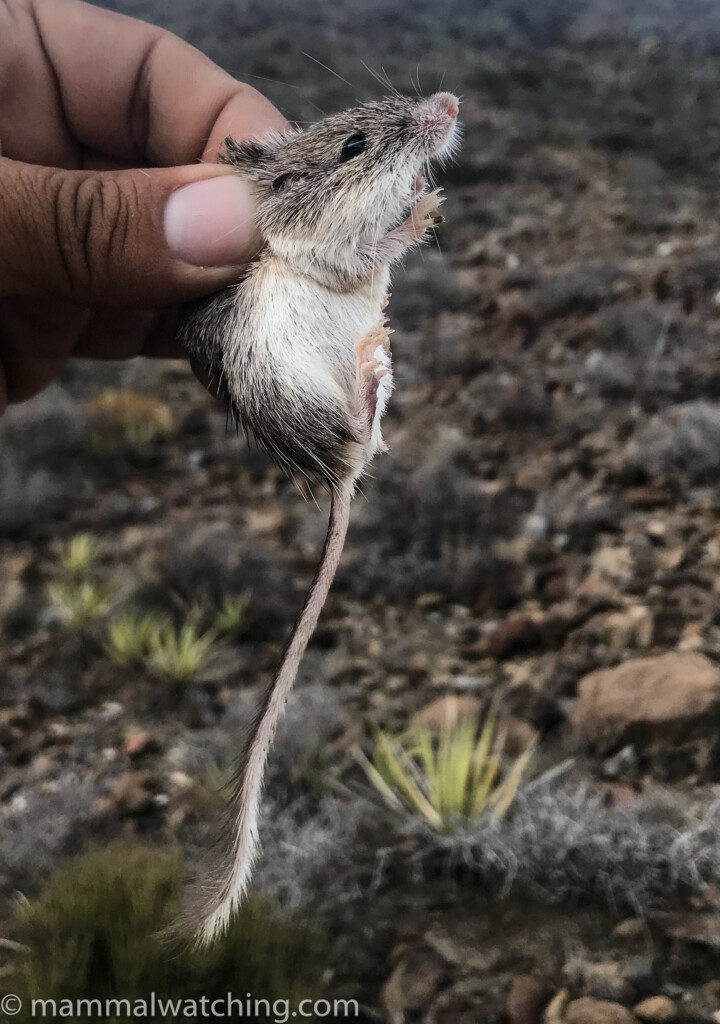
Nelson’s Pocket Mouse, Chaetodipus nelsoni
Back at our hotel we saw an Allen’s Squirrel running along a wall. And then it was a very slow drive to the airport via various tailbacks and accidents. But I made my flight, just, and had time on the plane to reflect on how impressively picturesque and biodiverse this part of Mexico is. A very pleasant surprise and yet another place to return to.
Thank You
As always, a big big thanks to Juan for working so hard and so flexibly, and for his patience, expertise and good company. Also thank you very much to Issachar and Silvino for some great batting and for their help with the small mammal trapping. And a big thanks to Claudia in La Paz for all her help in trying to get us out to look for Pygmy Sperm Whales and Black Jackrabbits, despite her having two full time jobs on the go. Next time!
Trip List: Nuevo Leon & Colhuila
LEPORIDAE
Black-tailed Jackrabbit (Lepus californicus)
SCIURIDAE
Allen’s Squirrel (Sciurus alleni)
Mexican Prairie Dog (Cynomys mexicanus)
HETEROMYIDAE
Nelson’s Pocket Mouse (Chaetodipus nelsoni)
Merriam’s Kangaroo Rat (Dipodomys merriami)
CRICETIDAE
Mexican Vole (Microtus mexicanus)
Goldman’s Woodrat (Neotoma goldmani)
Fulvous Harvest Mouse (Reithrodontomys fulvescens)
Mearns’s Grasshopper Mouse (Onychomys arenicola)
Rock Mouse (Peromyscus difficilis)
Cactus Mouse (P.eremicus)
Hooper’s Deer Mouse (P.hooperi)
White-ankled Mouse (P. pectoralis)
VESPERTILIONIDAE
Big Brown Bat (Eptesicus fuscus)
Mexican Big-eared Bat (Corynorhinus mexicanus)
Townsend’s Big-eared Bat (C.townsendii)
Western Small-footed Myotis (Myotis ciliolabrum)
Flat-headed Myotis (M.planiceps)
Fringed Myotis (M.thysanodes)
CANIDAE
Coyote (Canis latrans)
CERVIDAE
White-tailed Deer (Odocoileus virginianus)
21 species, 10 lifers
Total for the 9 Days: 37 species, 16 lifers
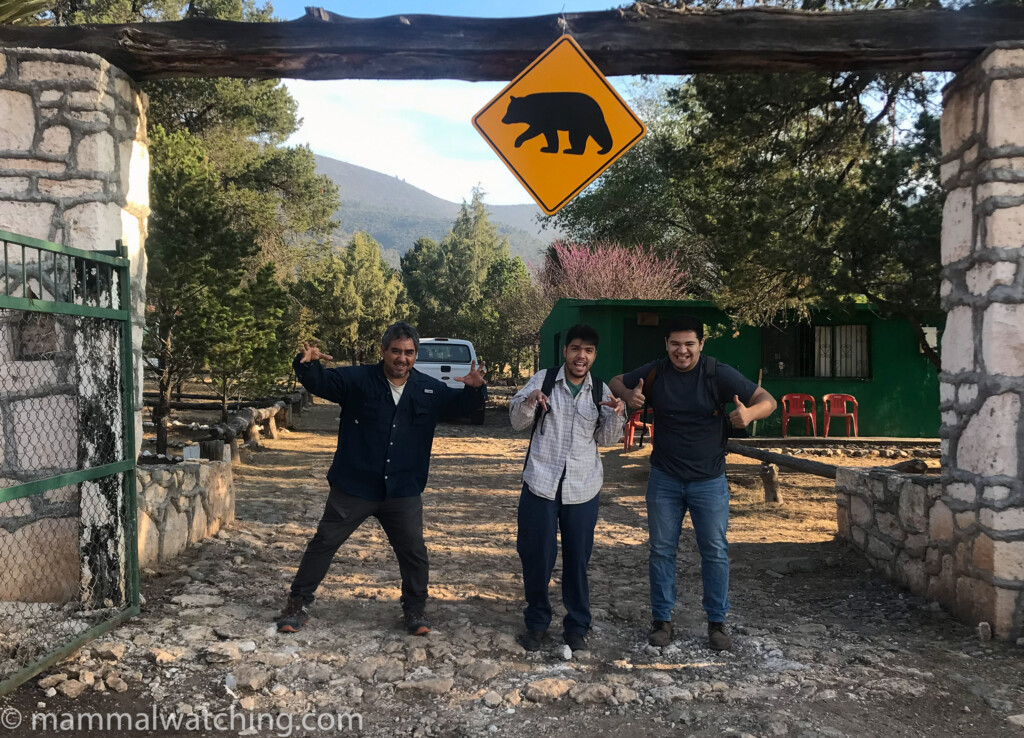
Juan, Issachar and Silvino


Leave a Reply
You must be logged in to post a comment.